Marrakesh is the oldest of the four royal cities of Morocco. I’ve already mentioned two, Meknes and Fes, while I didn’t go to the fourth one, Rabat, during this trip in 2010.
By the way, here is a map showing where I did go.
As for Marrakesh, it was founded in 1071 and became the capital of Morocco at that time. It held that status for the next two centuries (until 1244), but also later in the 16th and 17th centuries, and on several occasions after that period. The point is that it was the capital during the rule of four dynasties, which certainly adds to its importance.
Interestingly, in the Berber language, Marrakesh means "Land of God," while the name of the entire country (Morocco) also comes from the Spanish name for this city – Marruecos.
As in other major cities in Morocco, Marrakesh also has a medina, i.e., the old part of the city. Due to the significance of Marrakesh itself, as well as the beauty of its architectural and artistic achievements, the Medina of Marrakesh is listed as a UNESCO World Heritage Site.
So, after a long intercity coach ride, I arrived here from Ouarzazate, checked into a hotel soon afterwards and then went outside to take a short walk and get something to eat before going to bed.
My hotel was in the modern part of Marrakesh, so I saw various contemporary buildings in the area, which is something Marrakesh, as a large city, offers. It also offers terrible noise, traffic congestion and the like, although it’s possible that my impressions were particularly strong after spending several peaceful days in smaller towns.
However, there’s something else that Marrakesh offers, which I didn’t come across in other Moroccan cities. It was the possibility, as a woman, to sit at a table on a terrace, that is, in the garden or the front area of a café or restaurant.
I’ve mentioned several times that I’m not much of a feminist, but this was quite noticeable in 2010 and I have to admit I enjoyed it. Mostly because it allowed me to observe the city, people and happenings, rather than the interior decoration of some small space. I don’t know whether things have changed since then, for better or worse.
Since I went to bed relatively early, I woke up early as well and slowly started getting ready to explore the city. There was one great thing about this day – I wasn’t transferring anywhere by coach. So, without any rush, I first went down for breakfast, read a bit about Marrakesh and made some plans, though they weren’t particularly ambitious.
At some point, I went outside and slowly headed towards the Medina. It was quite cold and my fleece jacket came in very handy. It was cloudy at first, but the clouds mostly cleared in the meantime.
I first walked through the new part of the city, which is appropriately called the New City or Ville Nouvelle. Within it is the central shopping area called Gueliz, because Marrakesh is a highly tourist-oriented city.
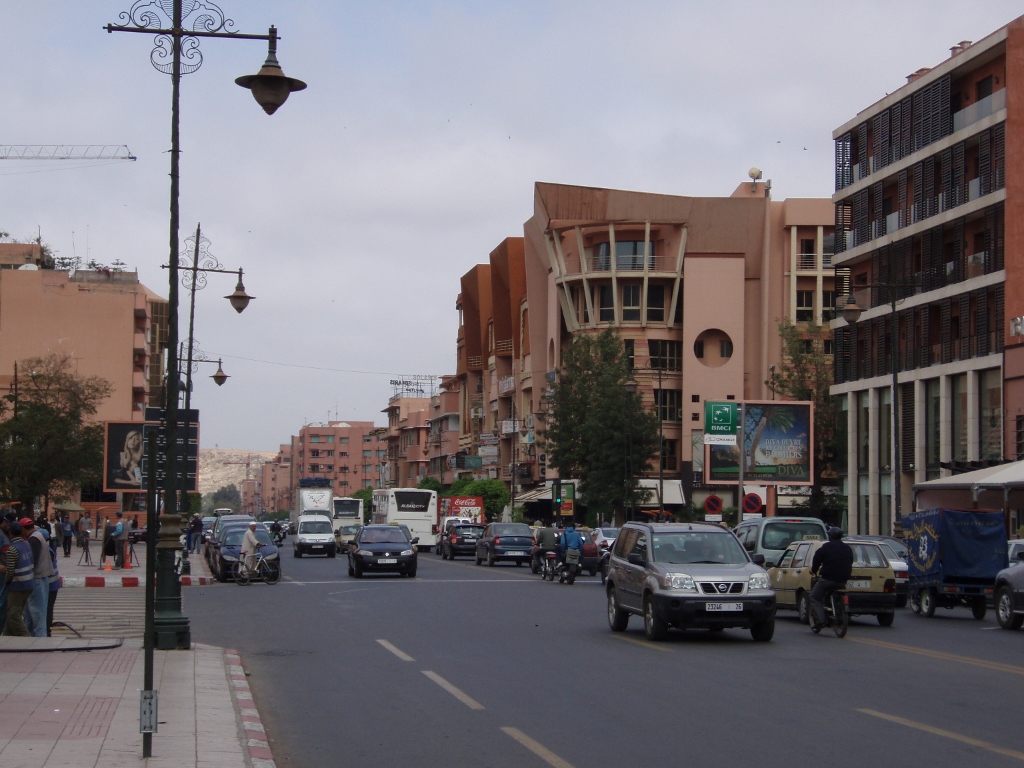 Marrakesh, a detail
Marrakesh, a detail
I wasn’t interested in that at all; I headed straight towards the Medina.
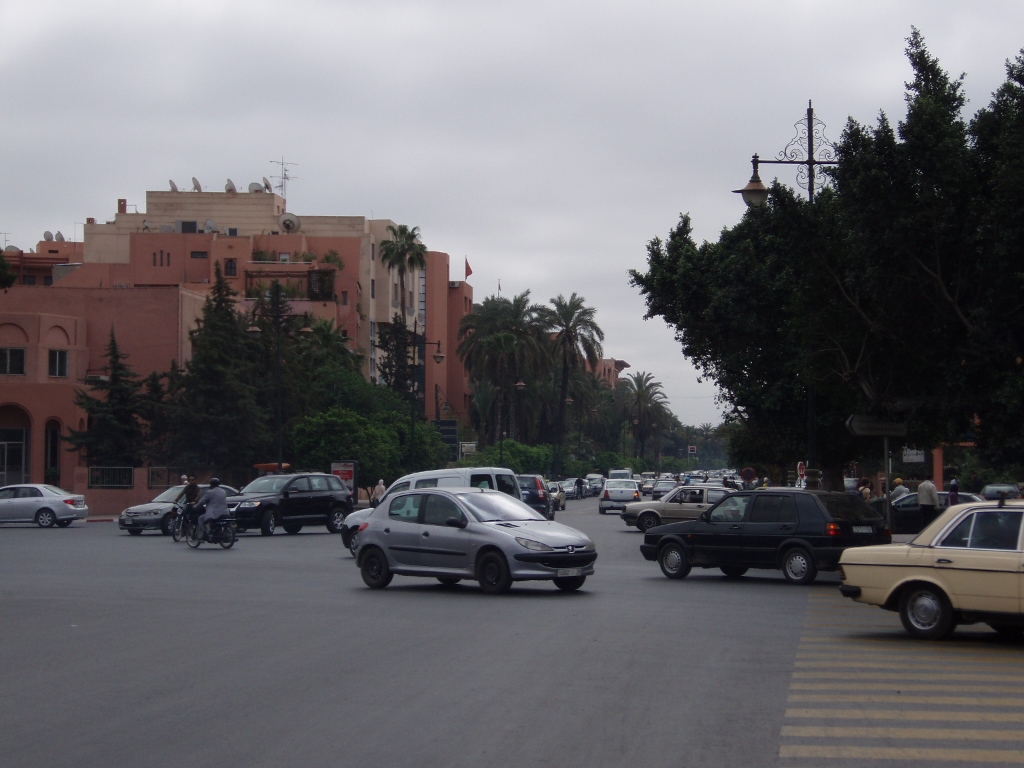 Marrakesh, a detail
Marrakesh, a detail
In the distance, I could see the impressive minaret of the Koutoubia Mosque.
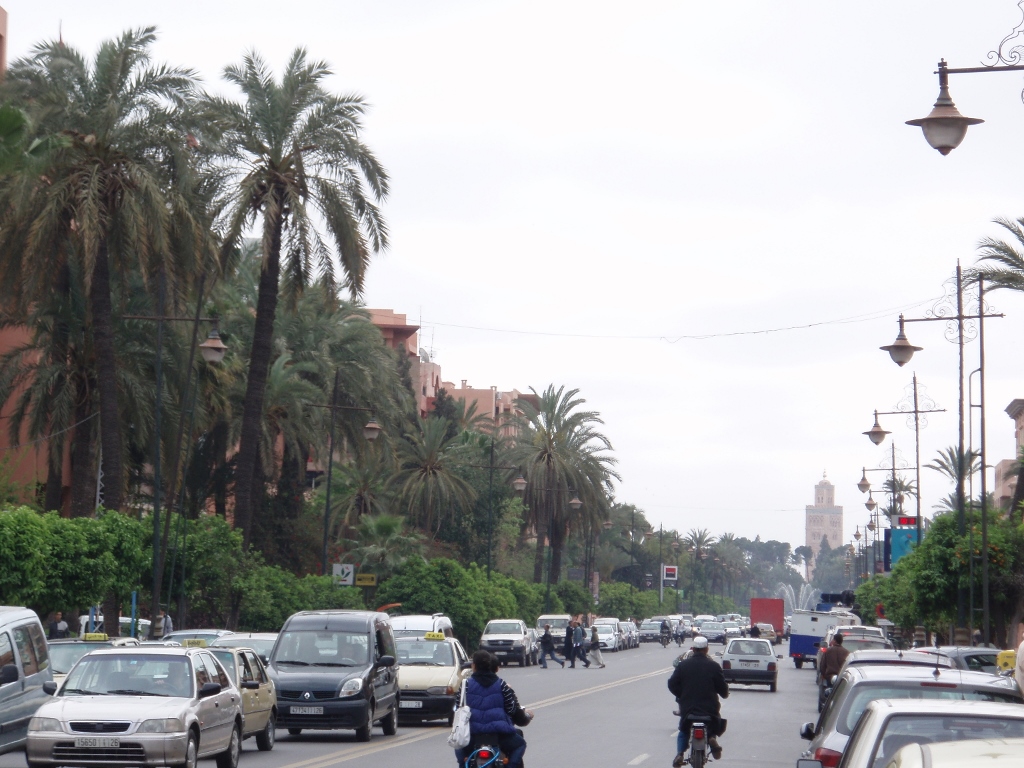 Marrakesh, a detail
Marrakesh, a detail
However, before I reached the Koutoubia Mosque, I passed by the walls of old Marrakesh.
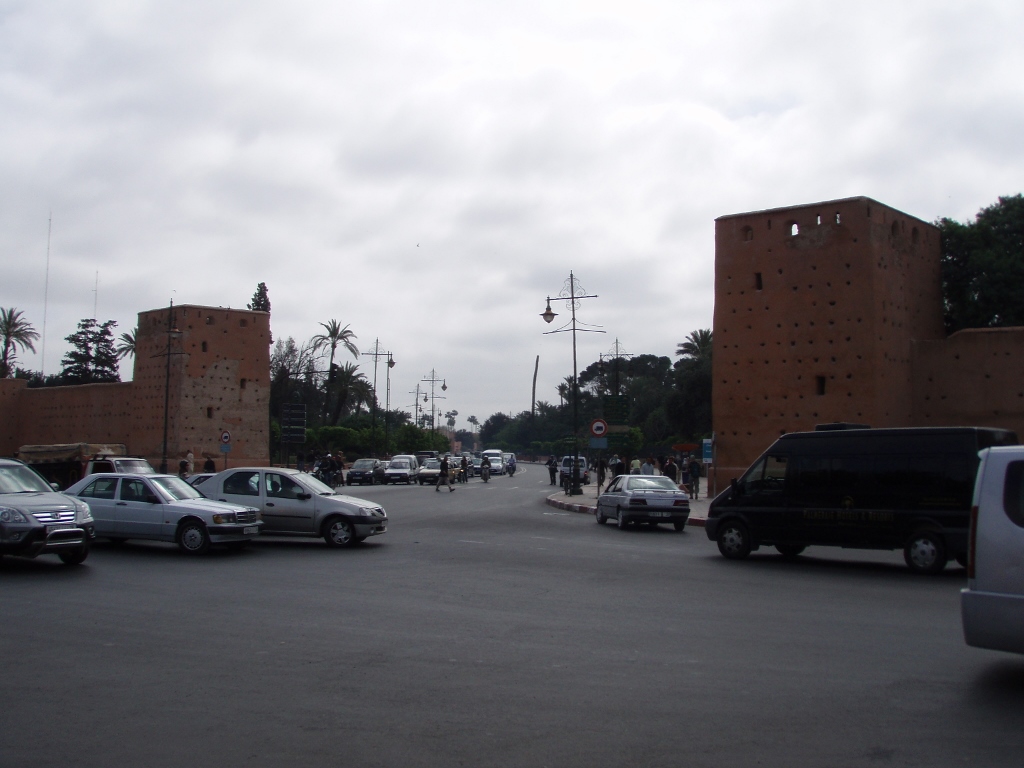 Marrakesh, a detail
Marrakesh, a detail
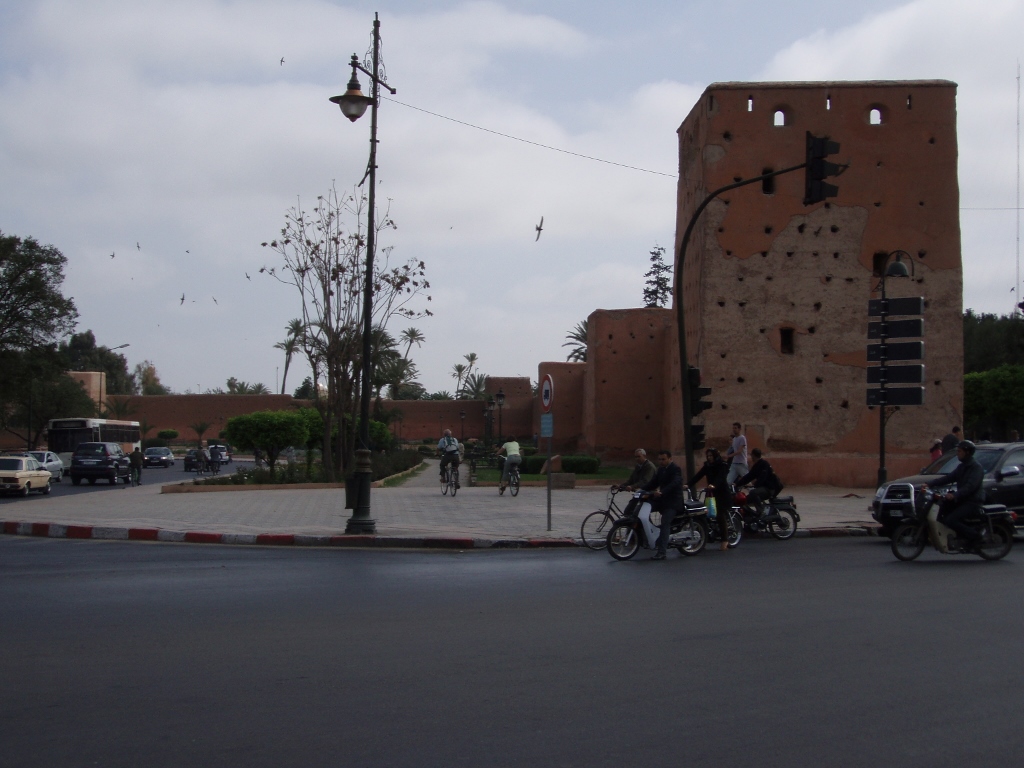 Marrakesh, a detail
Marrakesh, a detail
With an area of about 700 hectares, the Medina in Marrakesh is significantly larger than the medinas I had previously visited. There is another interesting difference: within the Medina of Marrakesh, there are also large squares. Other medinas mostly consist of densely packed buildings.
After being founded by the Almoravids, a Berber and Moorish-Spanish dynasty originating from the Sahara, Marrakesh remained the political, economic and cultural centre of the country for a long time. I’ve already mentioned that it was the capital of Morocco during the rule of three other dynasties as well.
All of this has led to the fact that today the Medina in Marrakesh contains many impressive monuments from earlier times. These include the city walls, the kasbah, monumental gates, and the Koutoubia Mosque.
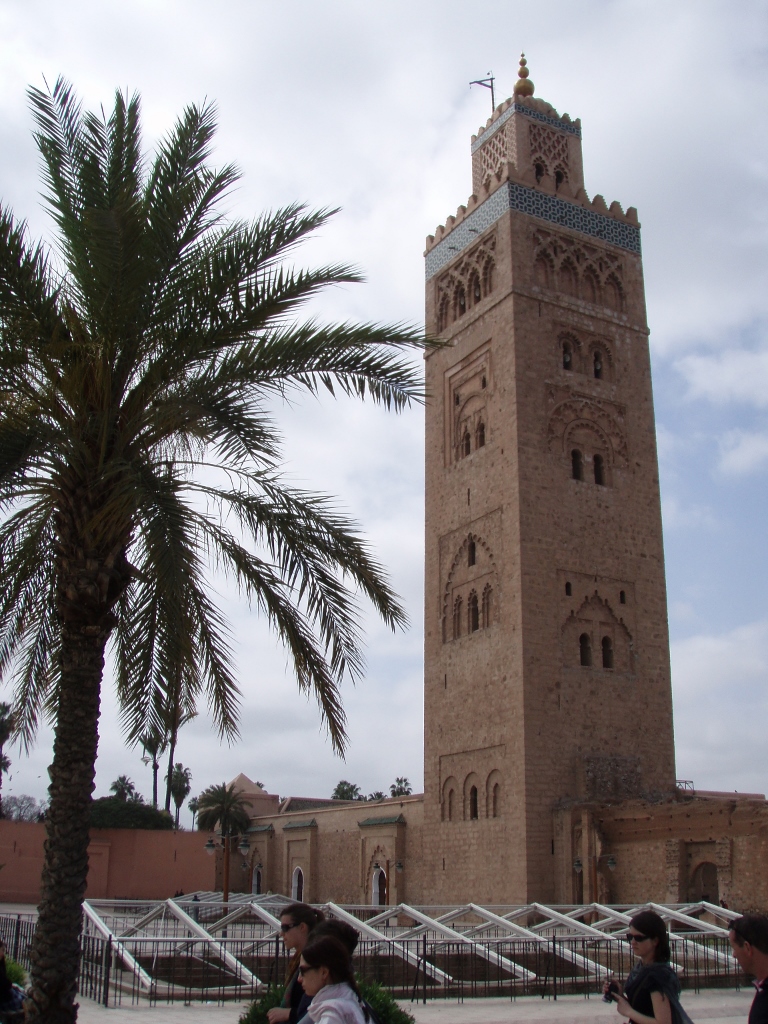 Koutoubia Mosque
Koutoubia Mosque
It is the largest mosque in Marrakesh, built within the Medina and located near the large square and market Jemaa el-Fnaa.
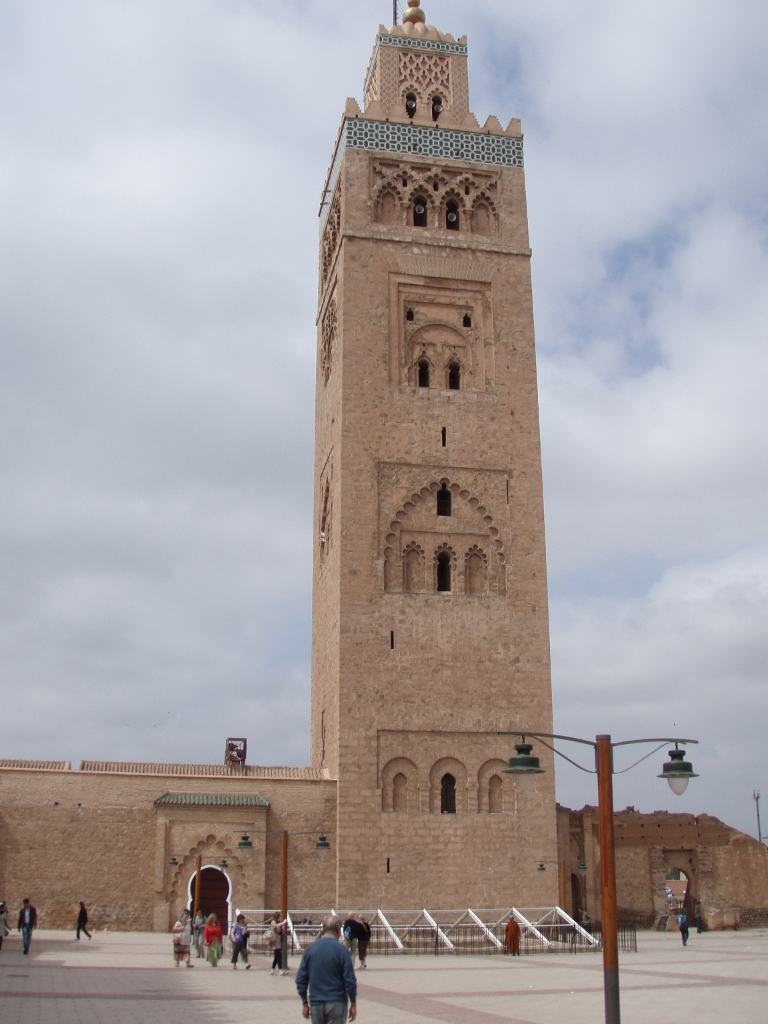 Koutoubia Mosque
Koutoubia Mosque
The mosque was founded in 1147, after Marrakesh had already been conquered by the second ruling dynasty, the Almohads. In 1158, a new version of the mosque was built, with the minaret completed around 1195. It is this second version that can be seen today. The minaret is 77 m high, richly decorated, and topped with metal spheres.
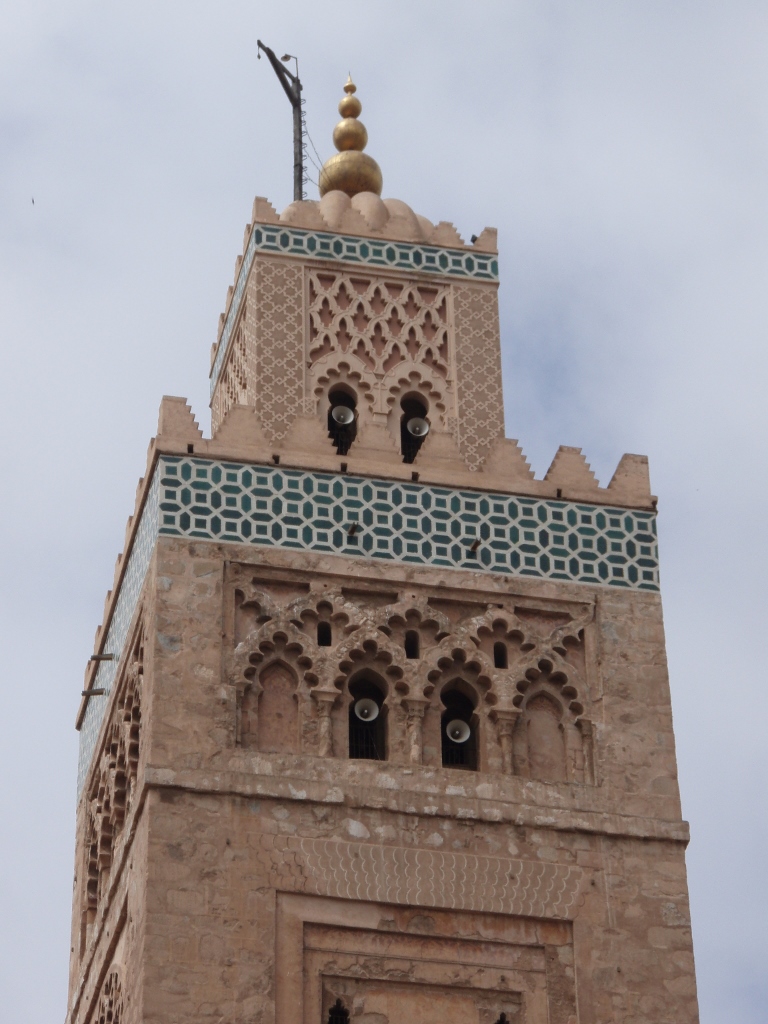 Koutoubia Mosque, a detail
Koutoubia Mosque, a detail
Long ago, when I was a child, I loved reading fairy tales and at that time in Yugoslavia there was an extraordinary series of children’s books with fairy tales from around the world. I originally grew up with Serbian folk tales and the tales of the Brothers Grimm, of course, but later I simply adored reading stories from all corners of the globe. Maybe that’s when my insatiable thirst for travel and visiting distant lands was born. I don’t know. But what I do know is that I especially loved Afghan and Moroccan fairy tales. One of those Moroccan tales spoke of a sultana who hid her jewellery inside one of the metal spheres at the top of the Koutoubia Mosque minaret.
In any case, access to the interior of the mosque is permitted only to Muslims during prayer times. So, I observed the mosque, especially its impressive minaret, only from the outside, and then headed towards Jemaa el-Fnaa Square and market.
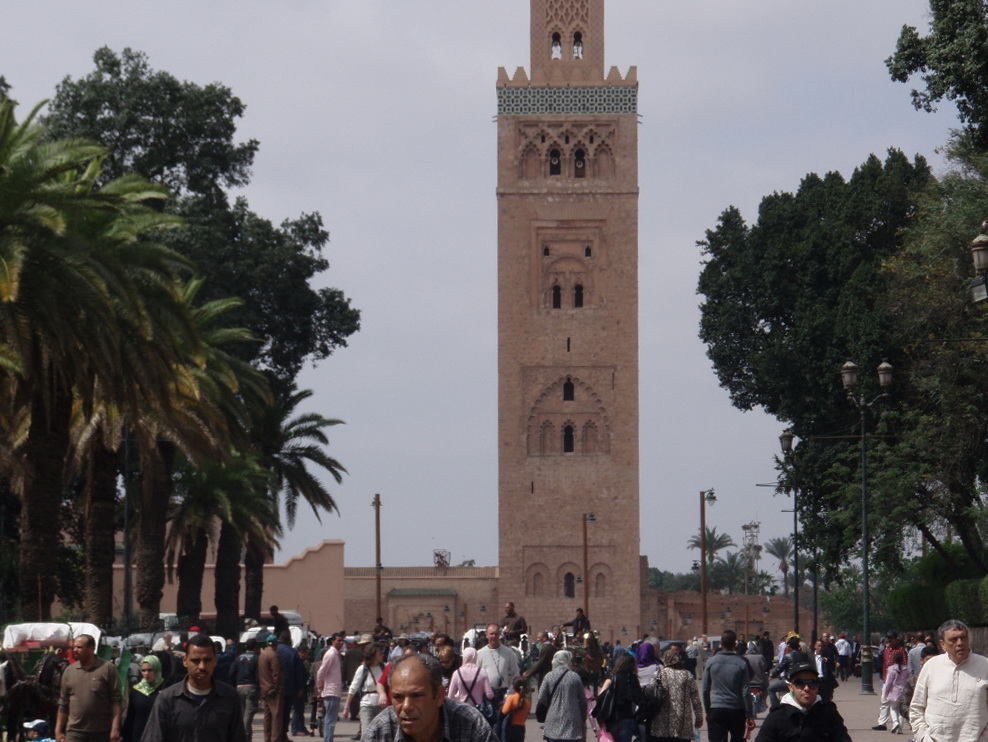 Koutoubia Mosque
Koutoubia Mosque
Jemaa el-Fnaa Square is located about 500 m from the Koutoubia Mosque and it is an impressive and very large open space within the Medina that essentially serves as the centre of social life in the old town. Something is always happening there throughout the day, with various street performers present, and there are also stalls along the edges of the square. As for the performers, some cater more to the tastes of the local population, while others are aimed more at foreigners. In addition to musicians, there are storytellers, animal performers (with monkeys and snakes, for example), acrobats, and so on. The square is especially lively in the evening, when the entire area becomes filled with stalls. However, I first arrived there in the morning.
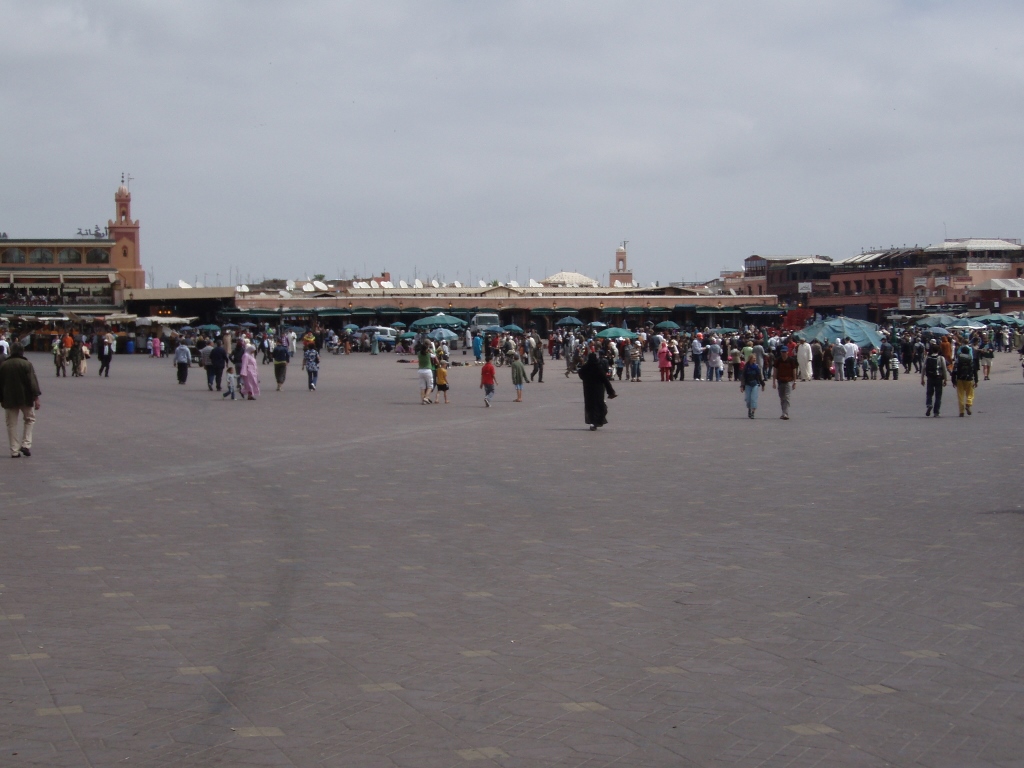 Jemaa el-Fnaa Square
Jemaa el-Fnaa Square
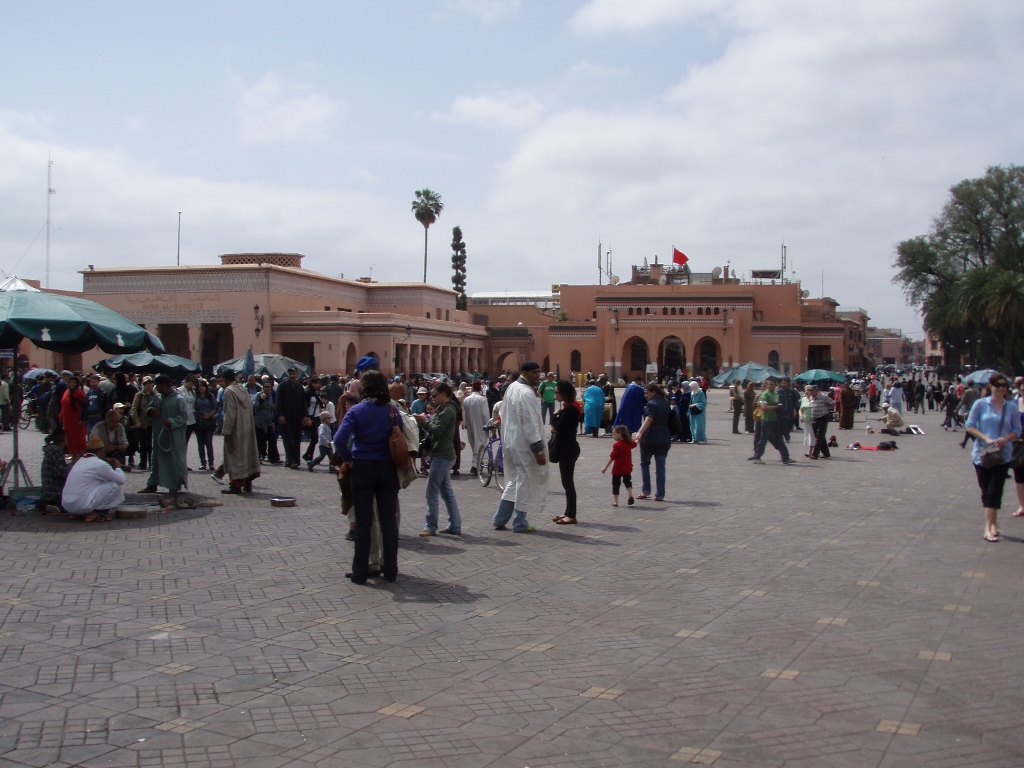 Jemaa el-Fnaa Square, a detail
Jemaa el-Fnaa Square, a detail
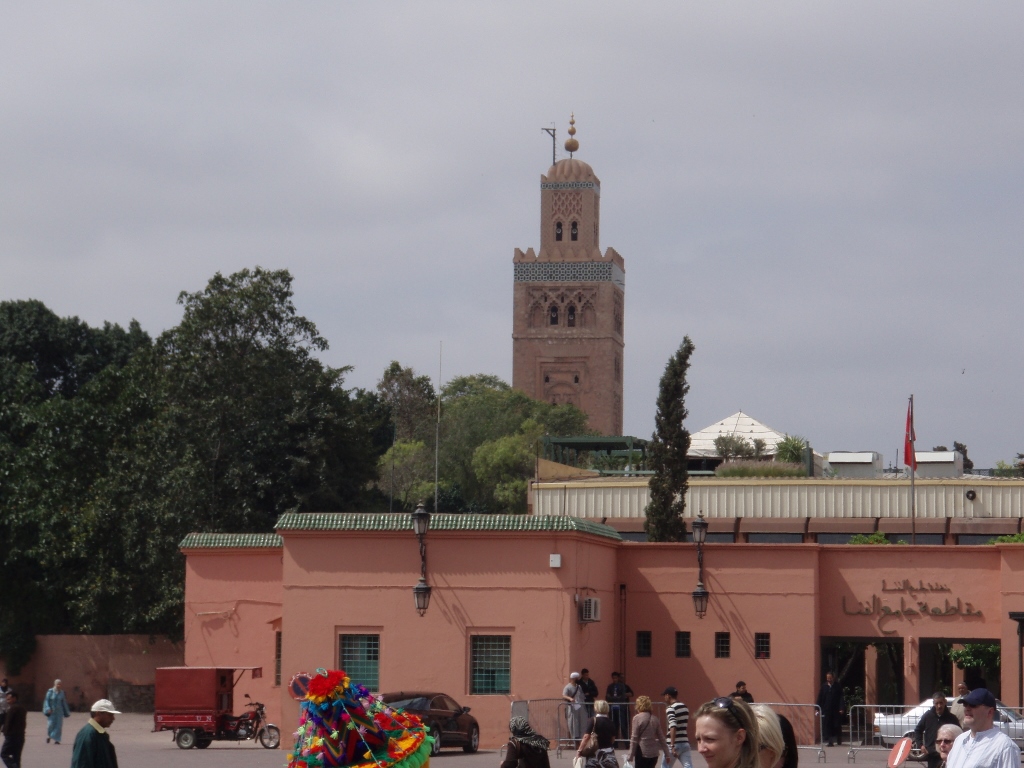 Jemaa el-Fnaa Square, a detail
Jemaa el-Fnaa Square, a detail
 Jemaa el-Fnaa Square, a detail
Jemaa el-Fnaa Square, a detail
The souks, offering a wide variety of interesting, colourful, and usually quite high-quality goods, start practically right from the square.
You only need to look at the photos I took while walking through the souks to see how fascinating this place can be. Since shopping itself didn’t particularly appeal to me, at first all of it felt overwhelming to my senses and eyes, so many details, colours, and objects, but I soon relaxed and definitely enjoyed the sights.
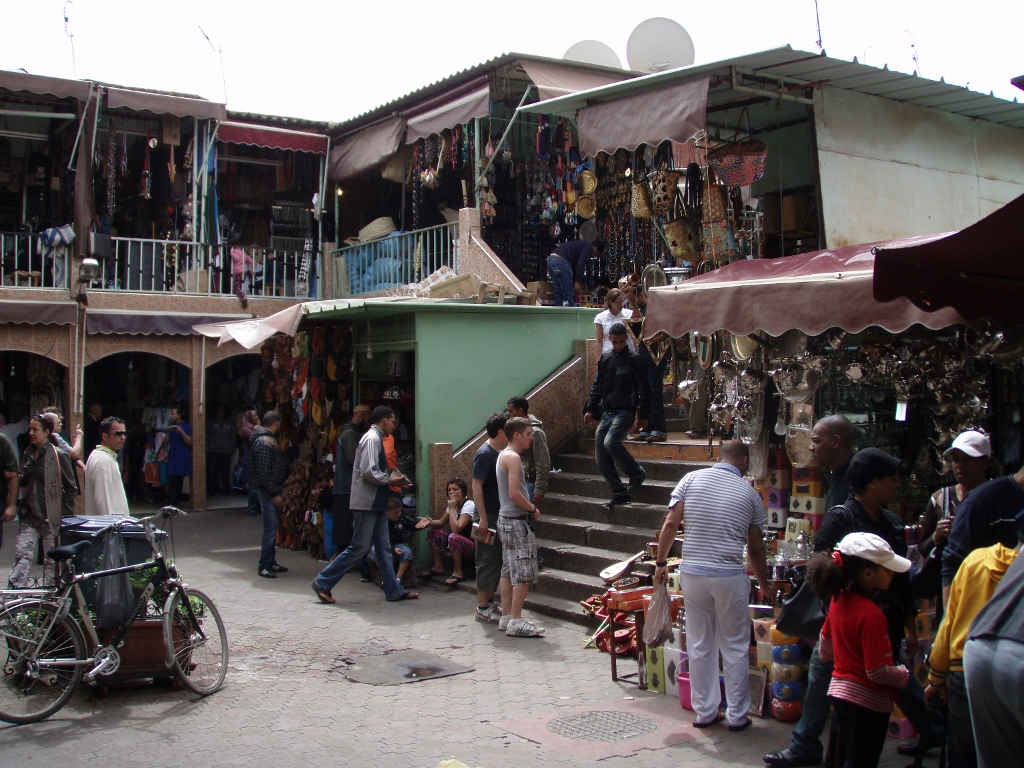 Marrakesh, a detail
Marrakesh, a detail
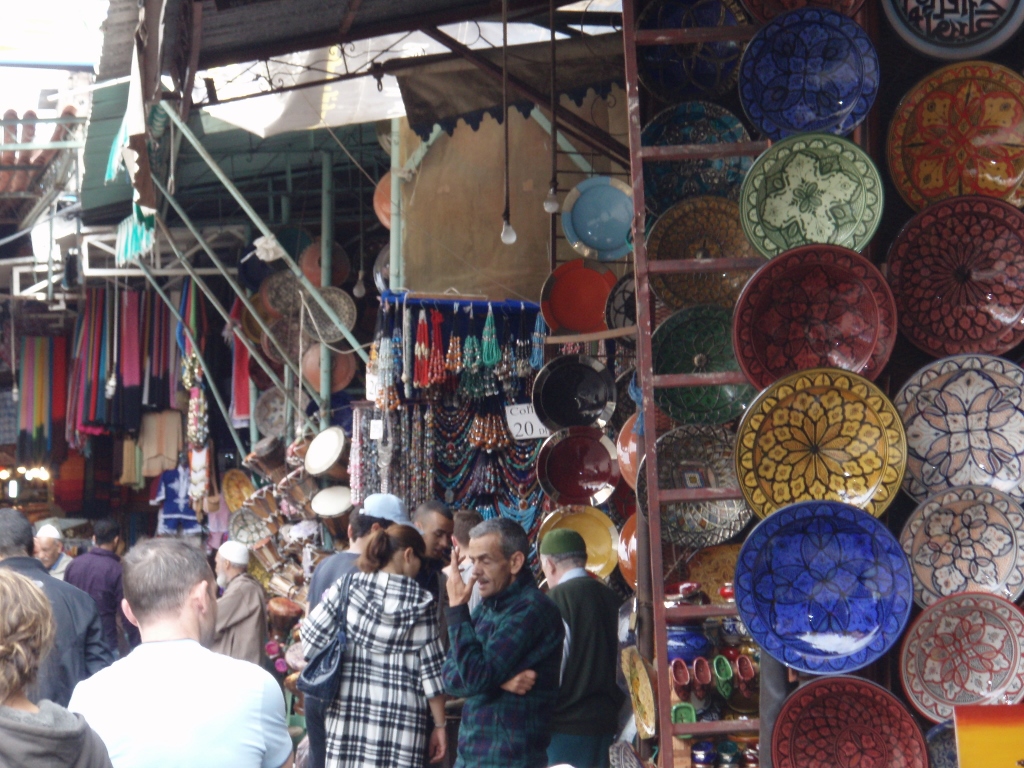 Marrakesh, a detail
Marrakesh, a detail
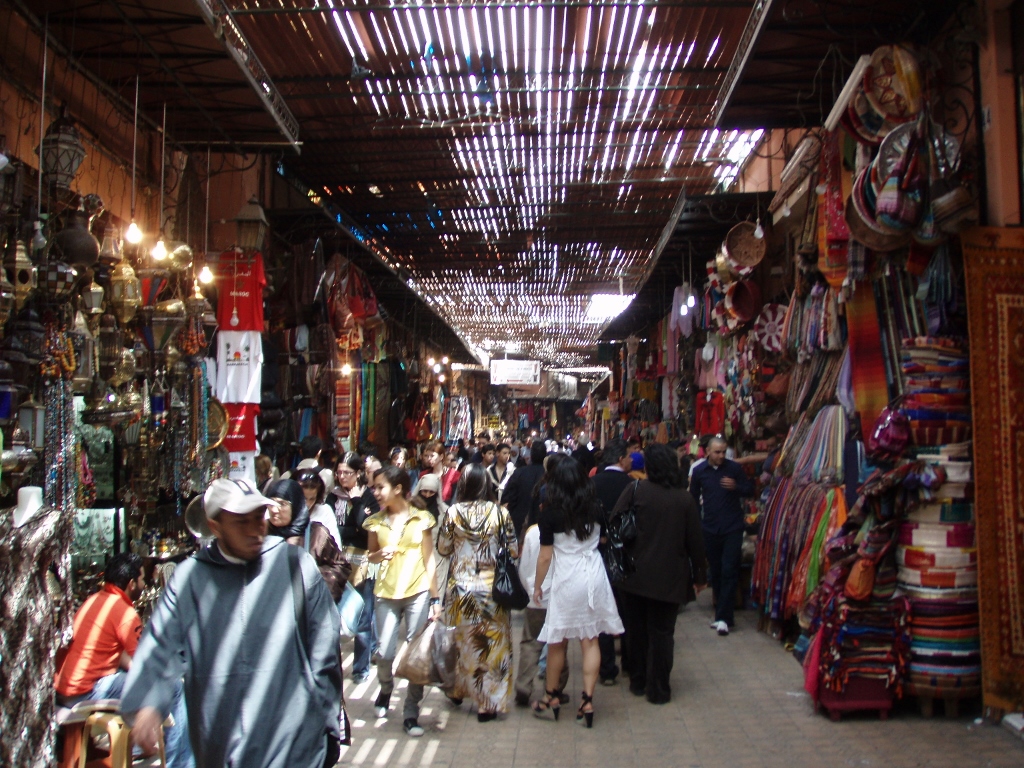 Marrakesh, a detail
Marrakesh, a detail
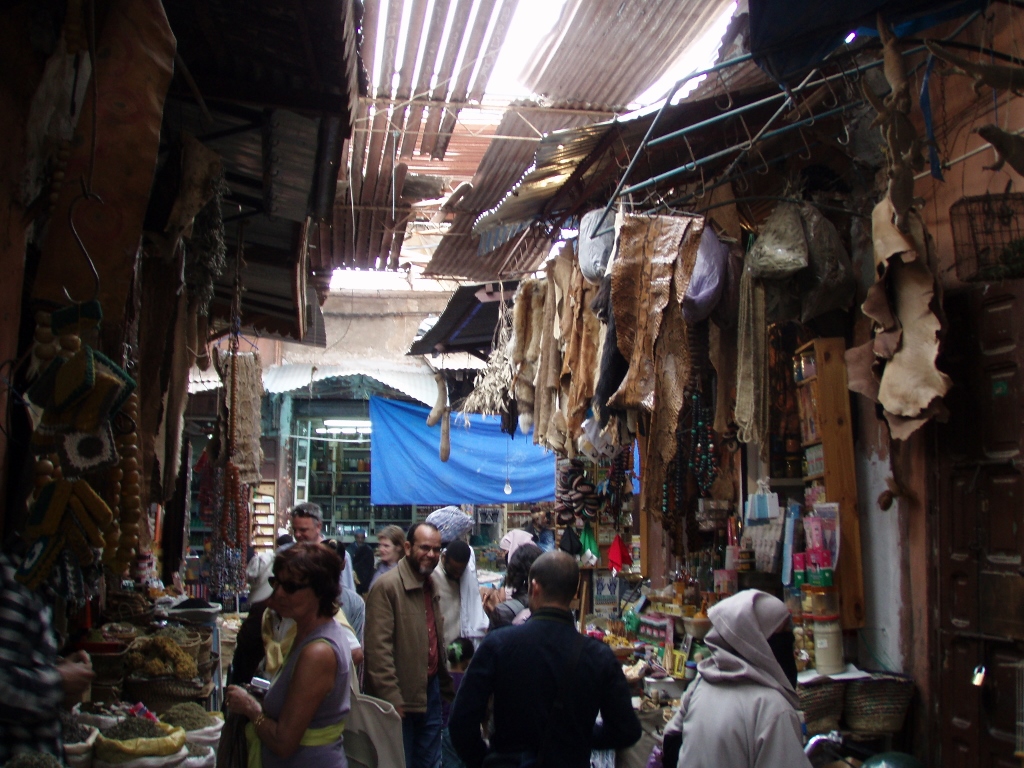 Marrakesh, a detail
Marrakesh, a detail
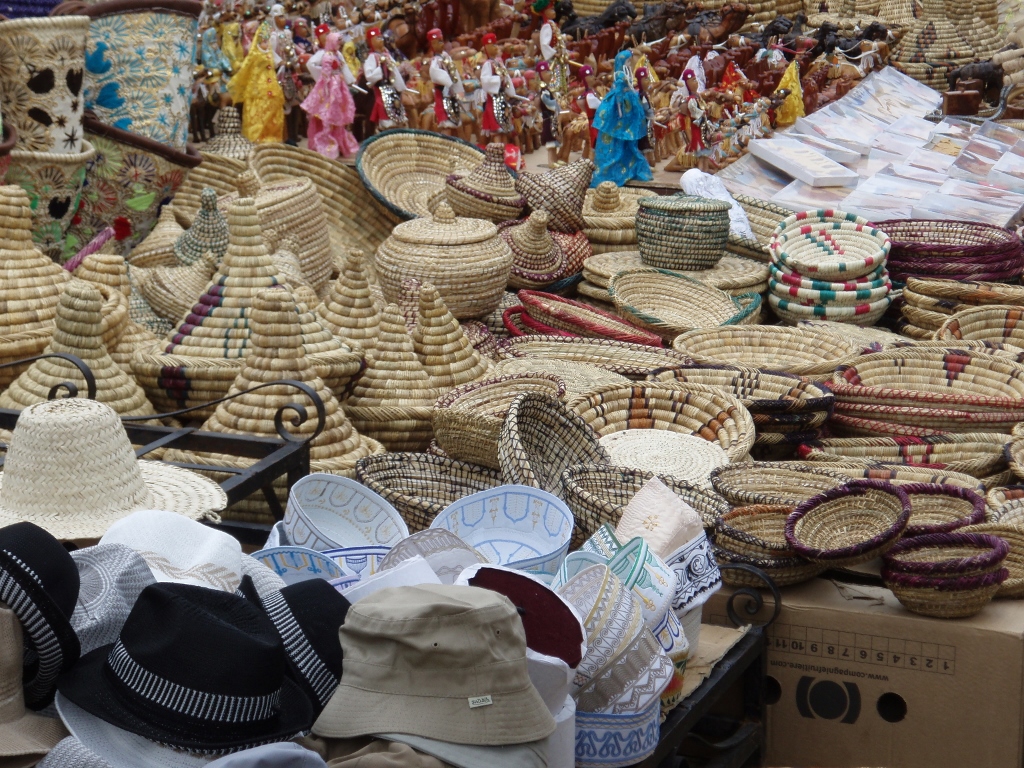 Marrakesh, a detail
Marrakesh, a detail
Although there is a section with colourful goods and souvenirs primarily intended for the many tourists, the souks, as parts of the market, are usually organised thematically. So I walked through the carpet souk, and a bit later through the one with colourful woven goods such as scarves and shawls.
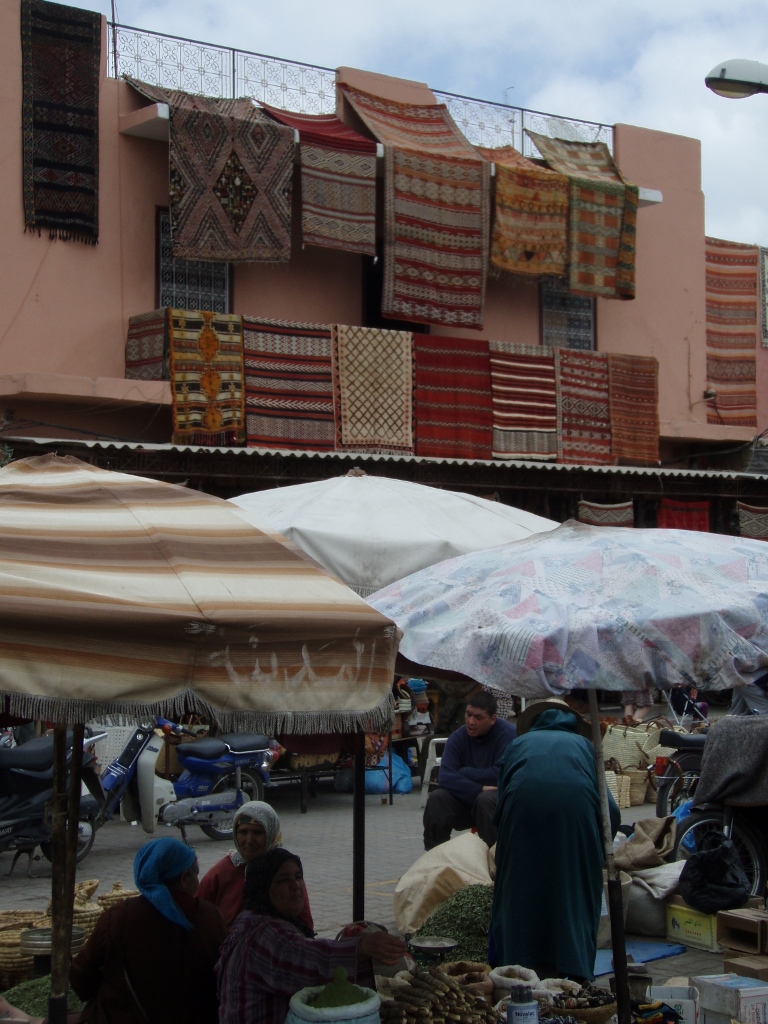 Marrakesh, a detail
Marrakesh, a detail
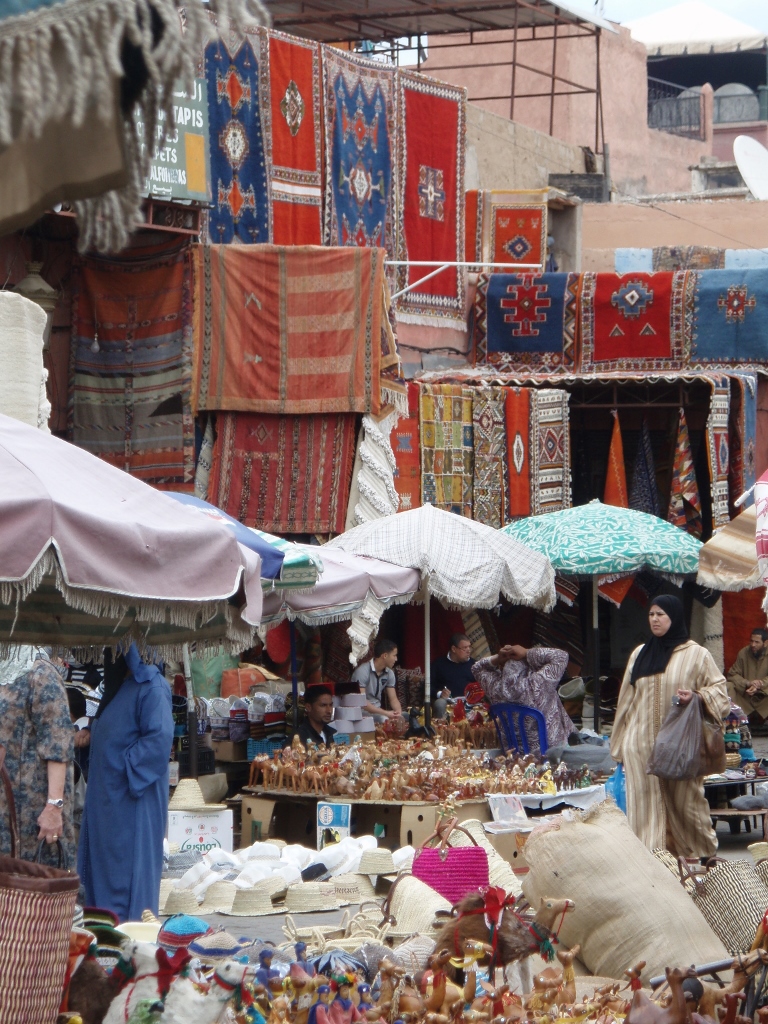 Marrakesh, a detail
Marrakesh, a detail
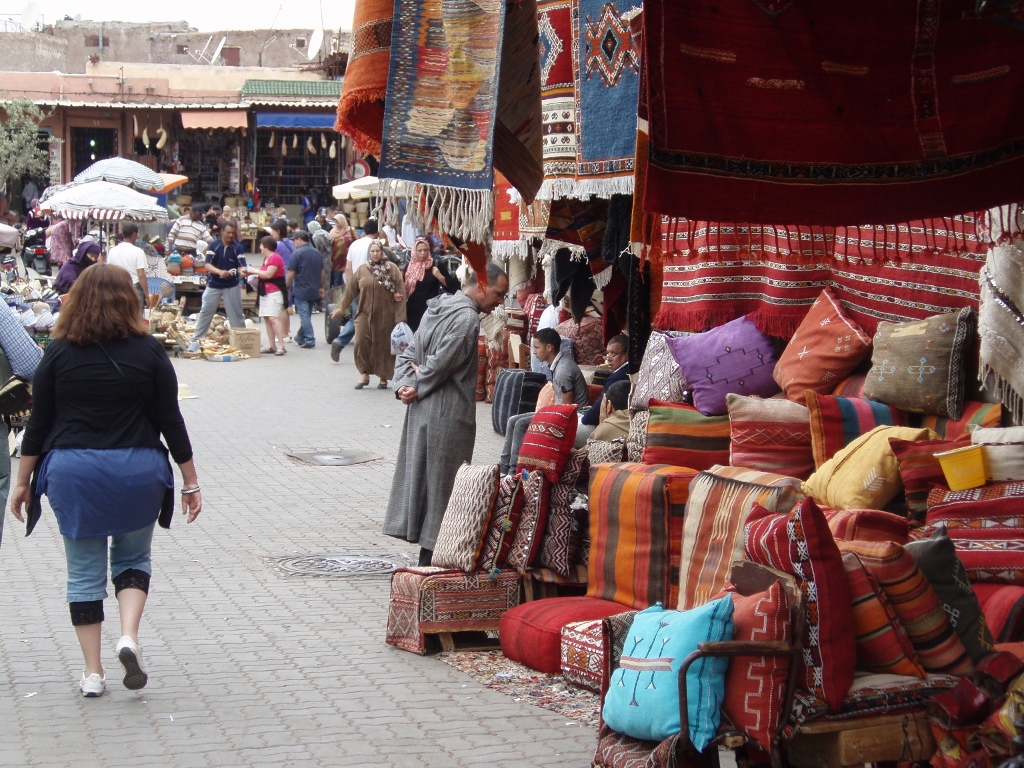 Marrakesh, a detail
Marrakesh, a detail
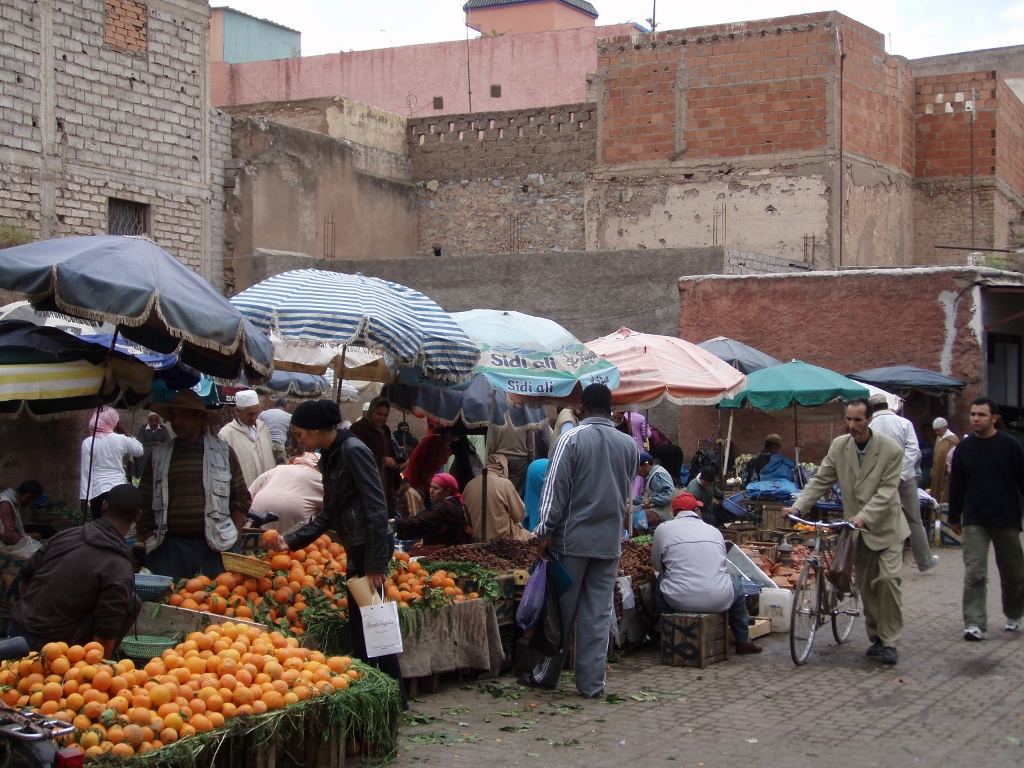 Marrakesh, a detail
Marrakesh, a detail
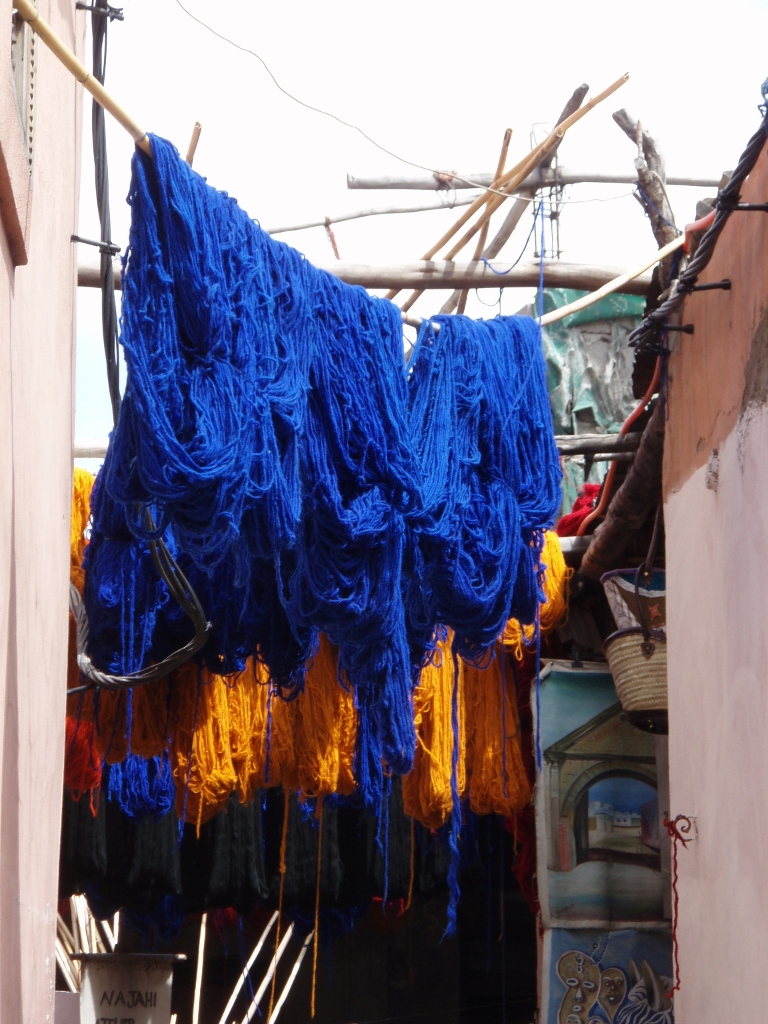 Marrakesh, a detail
Marrakesh, a detail
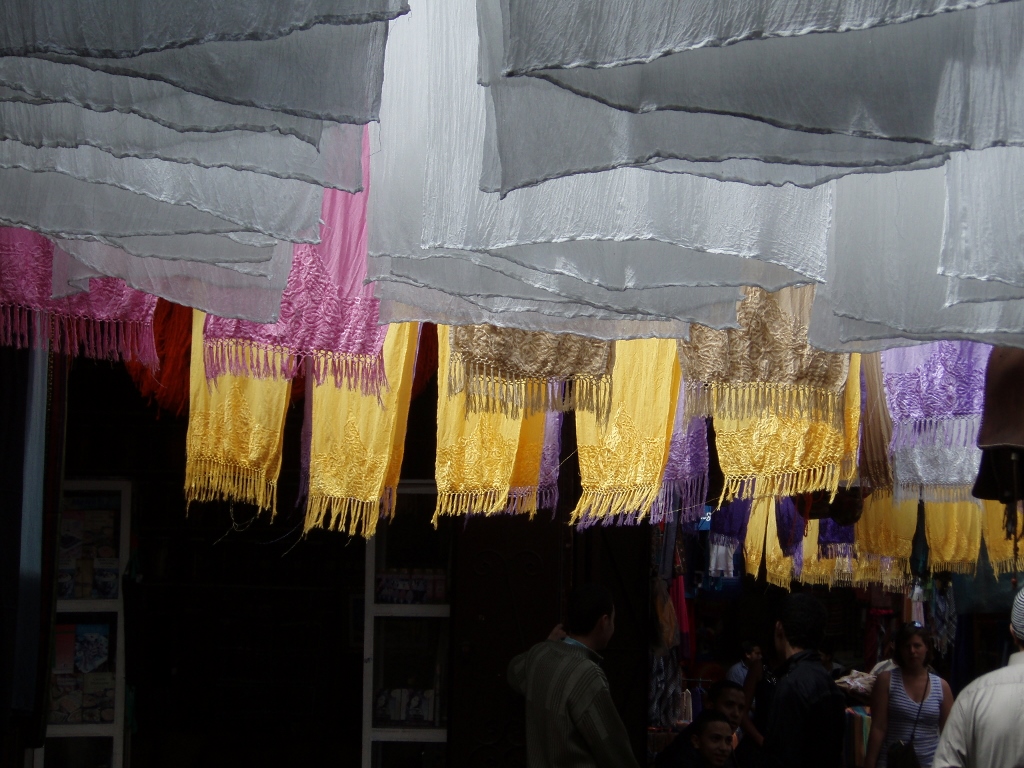 Marrakesh, a detail
Marrakesh, a detail
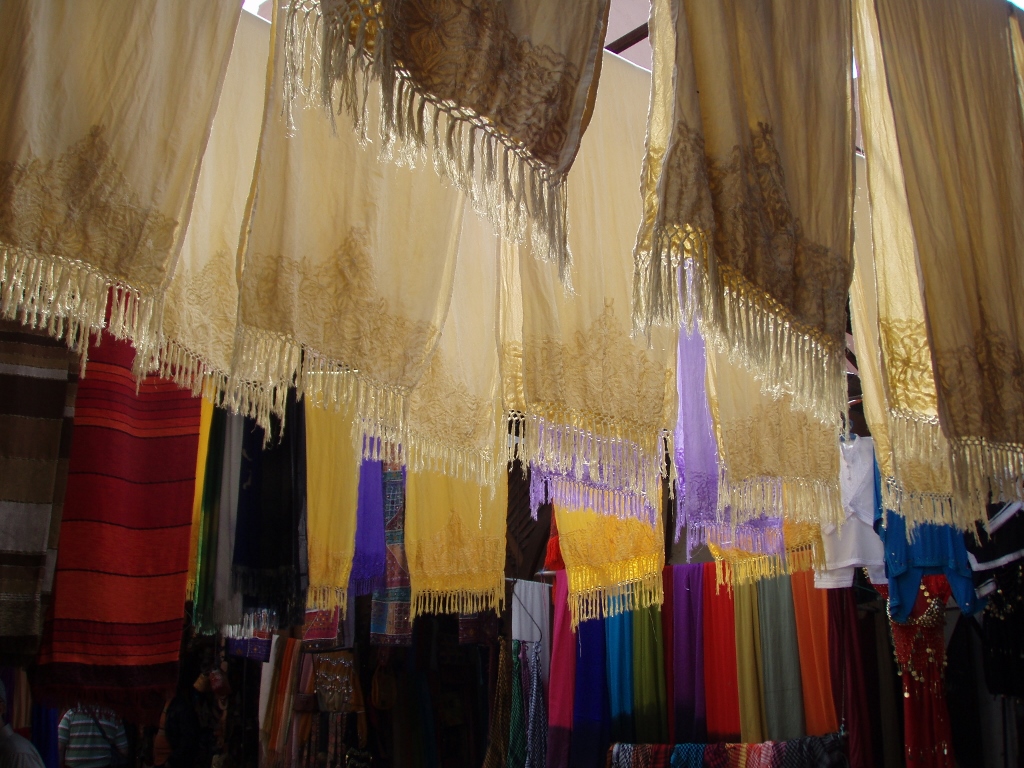 Marrakesh, a detail
Marrakesh, a detail
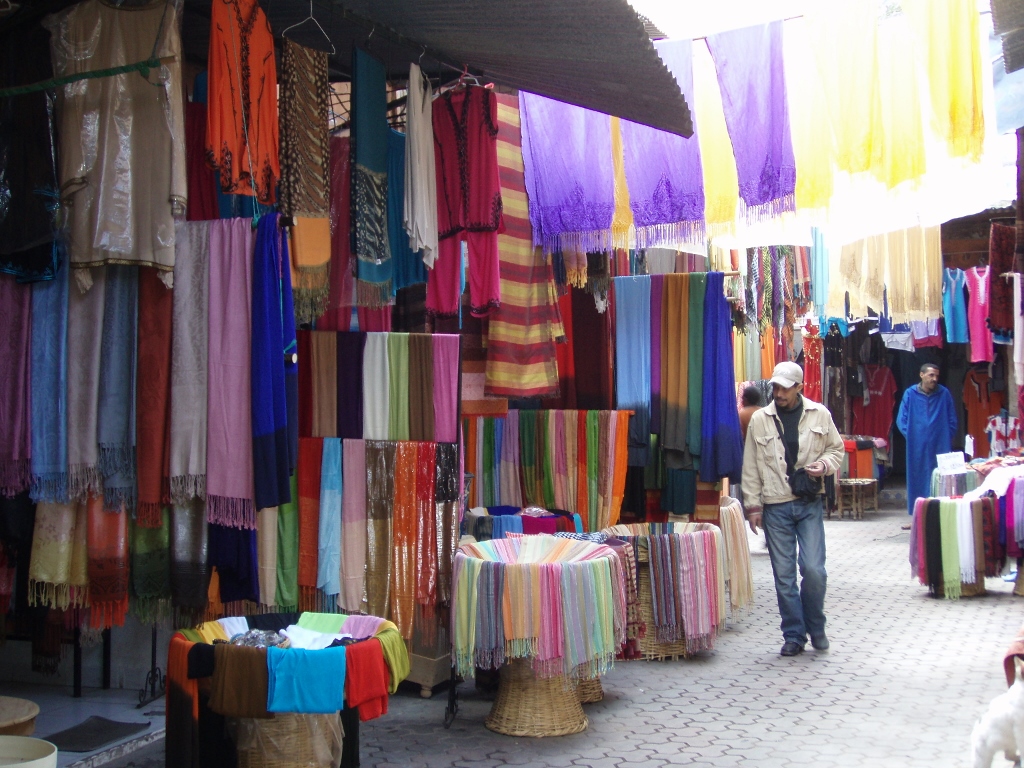 Marrakesh, a detail
Marrakesh, a detail
Then I went for a walk along the more “ordinary” streets of the medina, where I especially admired the gates, although there are countless other picturesque details as well.
I also noticed here that much of the medina is painted in a pale red hue. The city walls, built in the 12th century, as well as various structures built later, were made of red sandstone, which gave the city its nickname “The Red City.” This becomes especially striking on certain days when the sun is setting and its rays fall in a particular way over the Medina of Marrakesh, making the red colour stand out even more.
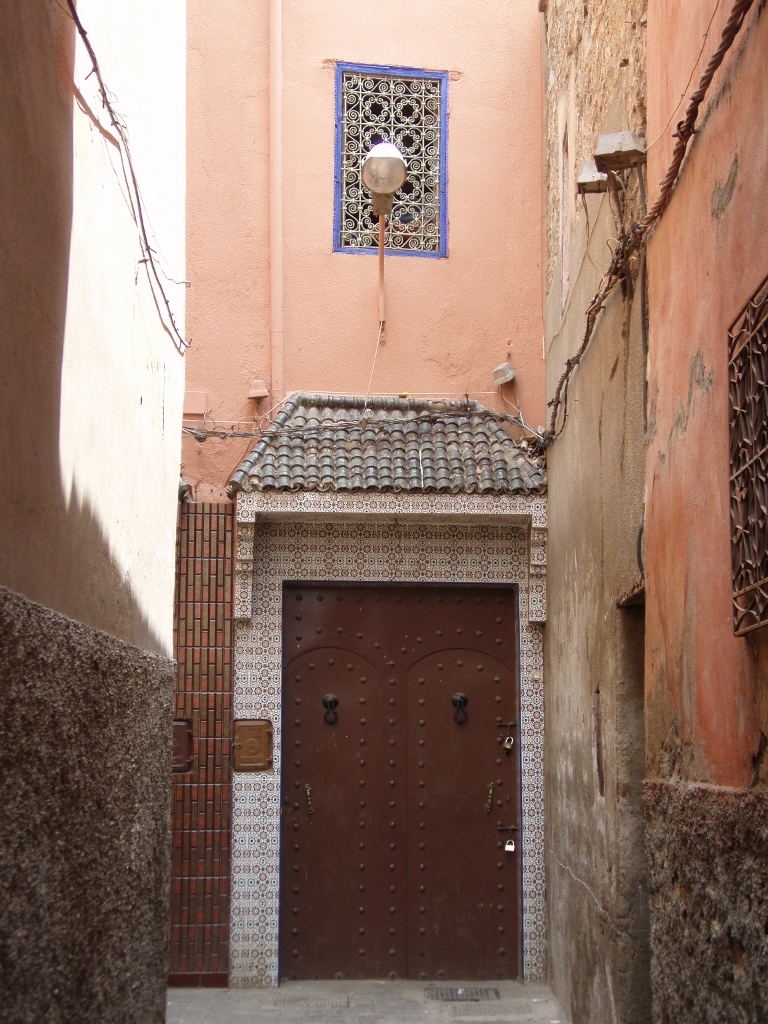 Marrakesh, a detail
Marrakesh, a detail
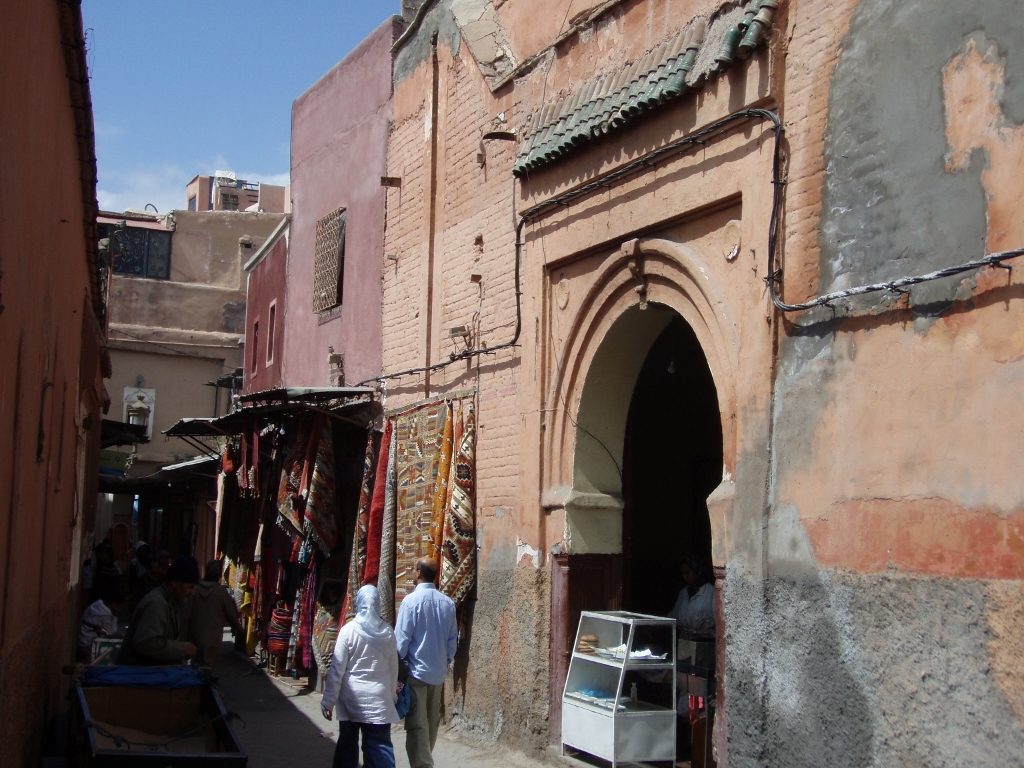 Marrakesh, a detail
Marrakesh, a detail
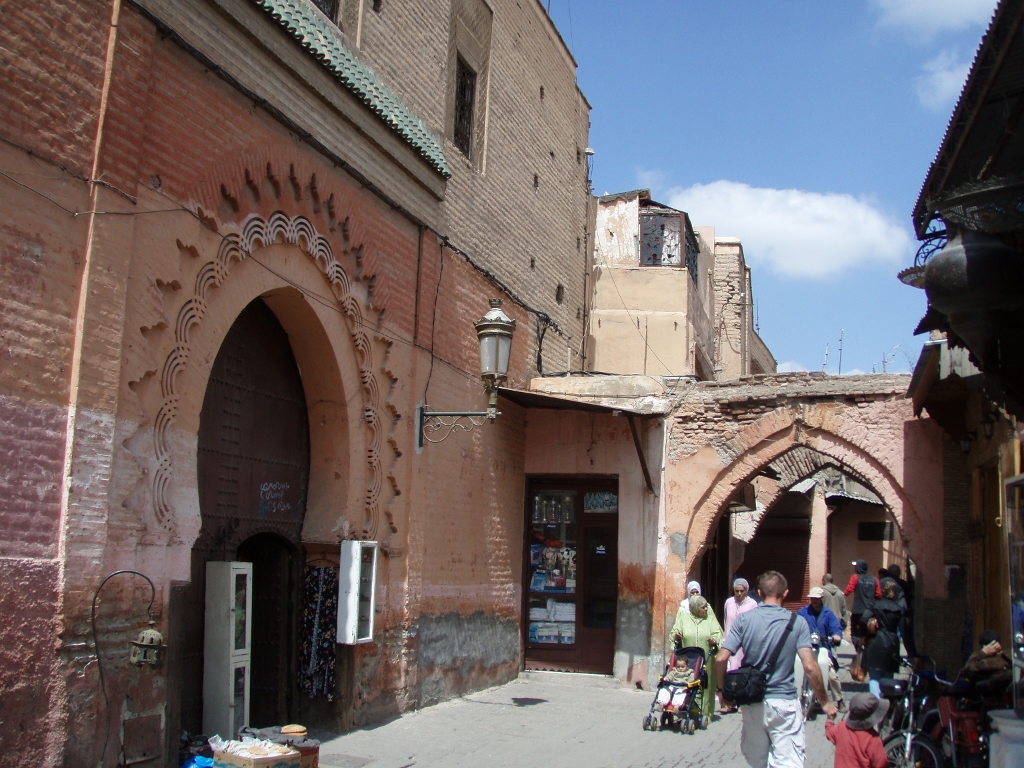 Marrakesh, a detail
Marrakesh, a detail
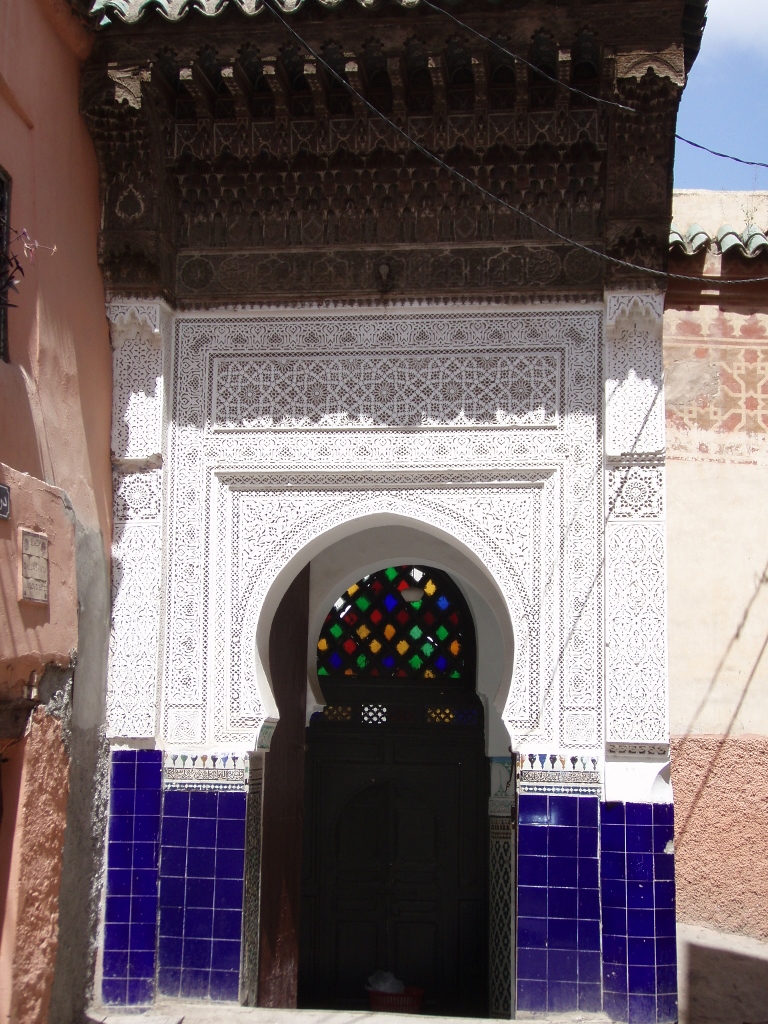 Marrakesh, a detail
Marrakesh, a detail
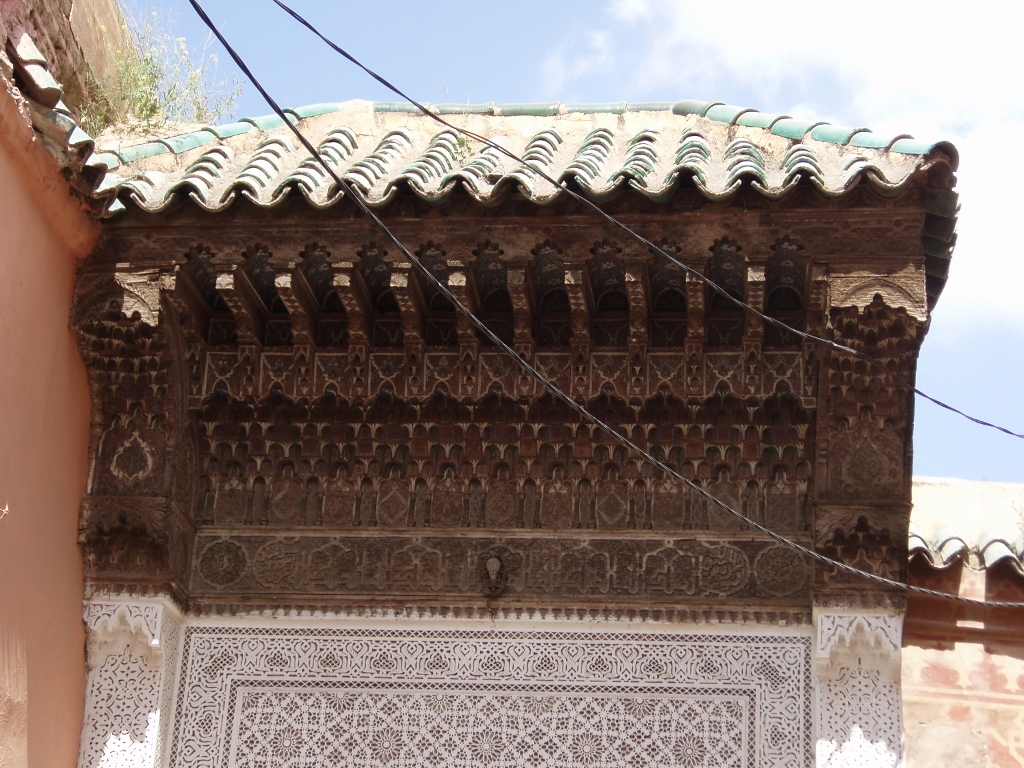 Marrakesh, a detail
Marrakesh, a detail
Although there are very interesting buildings within the Medina of Marrakesh, such as mosques, madrasas, and the like, during my visit I wasn’t particularly interested in touring them individually (whether going inside or not). Many of them can only be partially seen from the narrow streets, so I didn’t make much effort to identify them either.
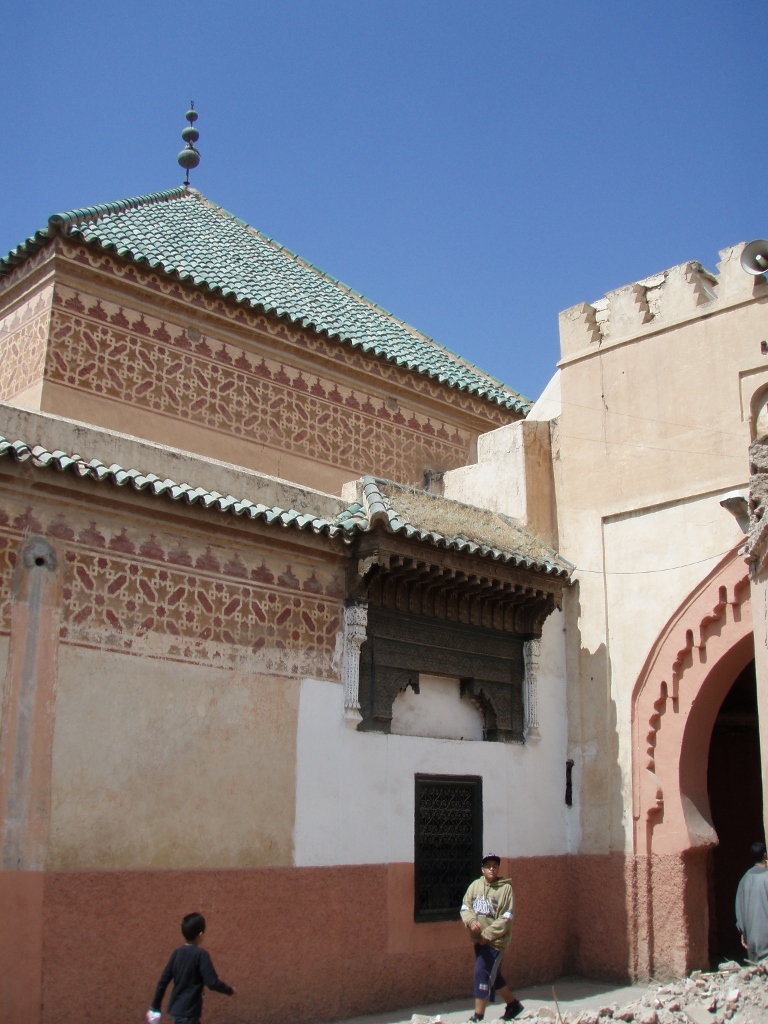 Marrakesh, a detail
Marrakesh, a detail
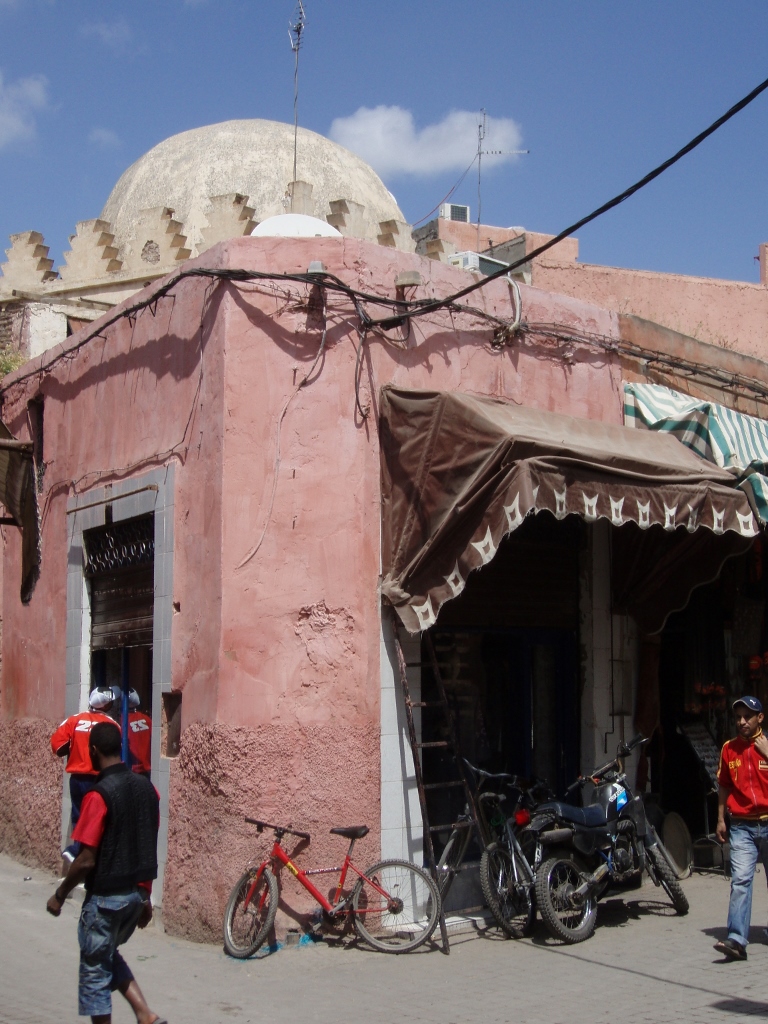 Marrakesh, a detail
Marrakesh, a detail
 Marrakesh, a detail
Marrakesh, a detail
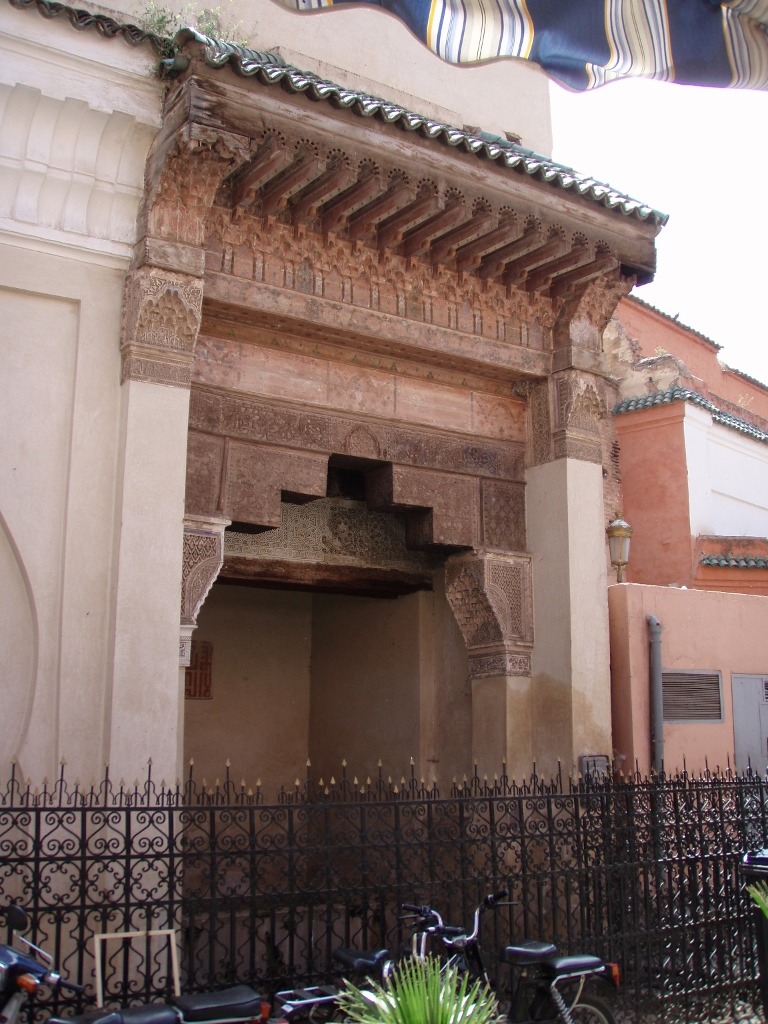 Marrakesh, a detail
Marrakesh, a detail
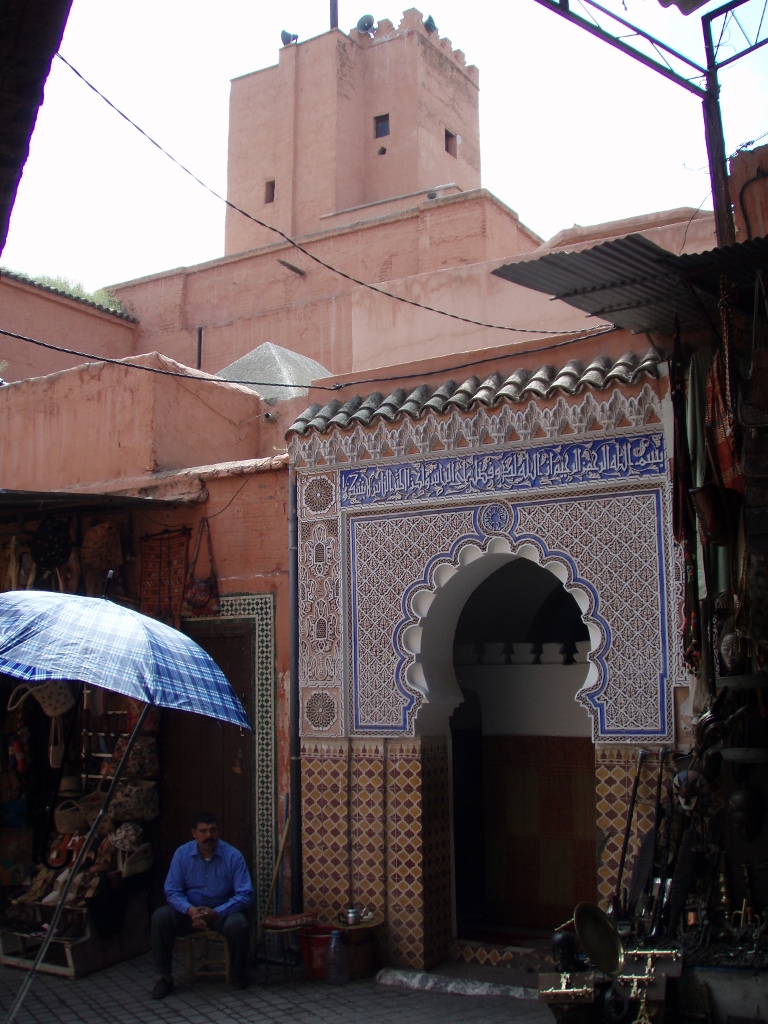 Marrakesh, a detail
Marrakesh, a detail
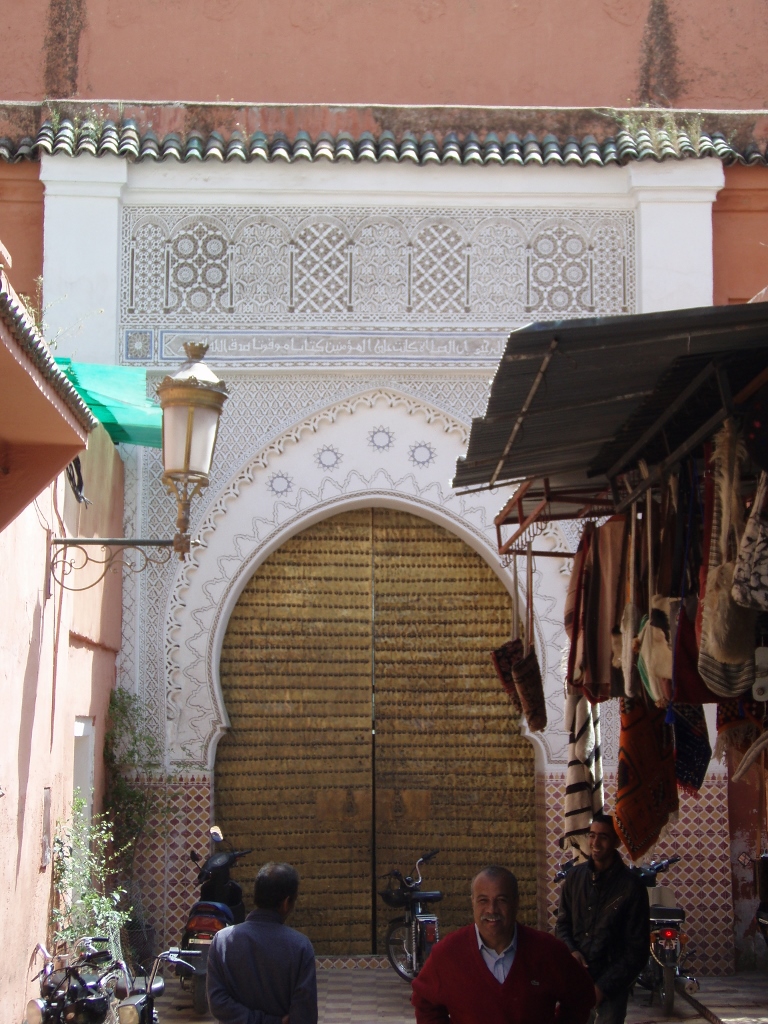 Marrakesh, a detail
Marrakesh, a detail
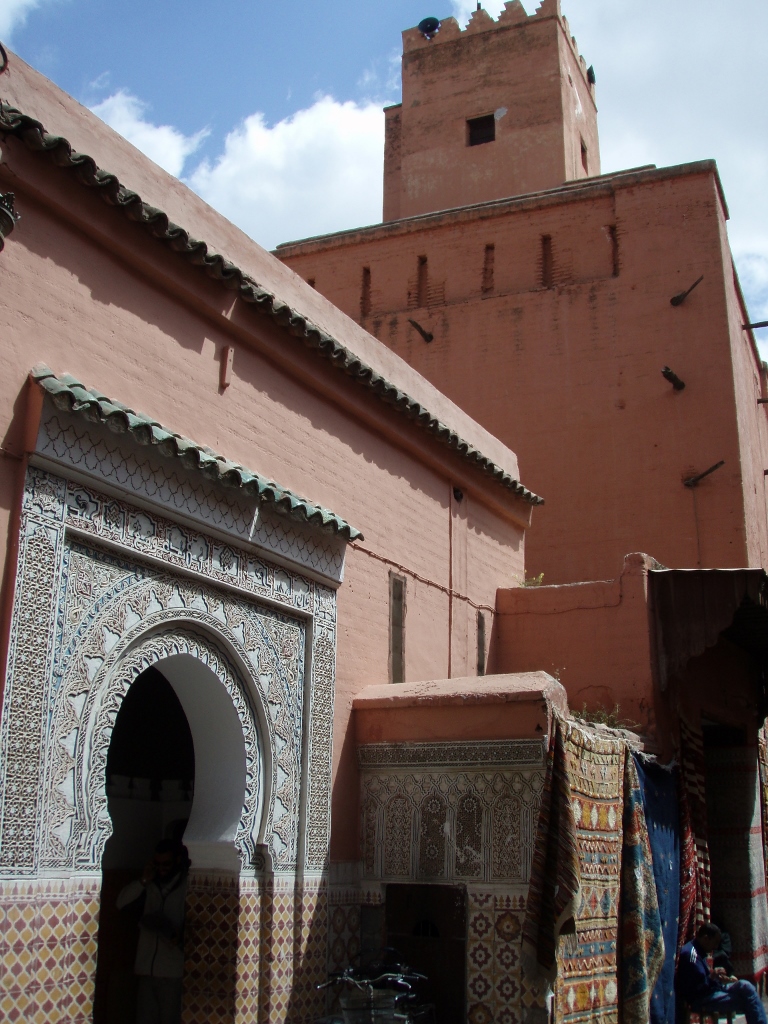 Marrakesh, a detail
Marrakesh, a detail
I wandered quite leisurely through the souks and the medina, and although I knew I had covered only a relatively small part of the old city, I can say right away that I got lost and had to make a few loops before I managed to find a way out of that "maze." To be honest, I even had to ask local shopkeepers how to get out. I found this both interesting and amusing, but also a bit strange. I had already mentioned, when talking about Fes, that the Medina there is usually considered difficult to navigate, yet I felt completely at ease. That absolutely wasn’t the case in Marrakesh, but it didn’t make me enjoy the experience any less.
When I finally escaped the “grip” of the souks and the medina, it was already early afternoon, and I was a bit hungry. So I went to a restaurant with a rooftop terrace, where I had a nice view and ordered dishes typical of Morocco.
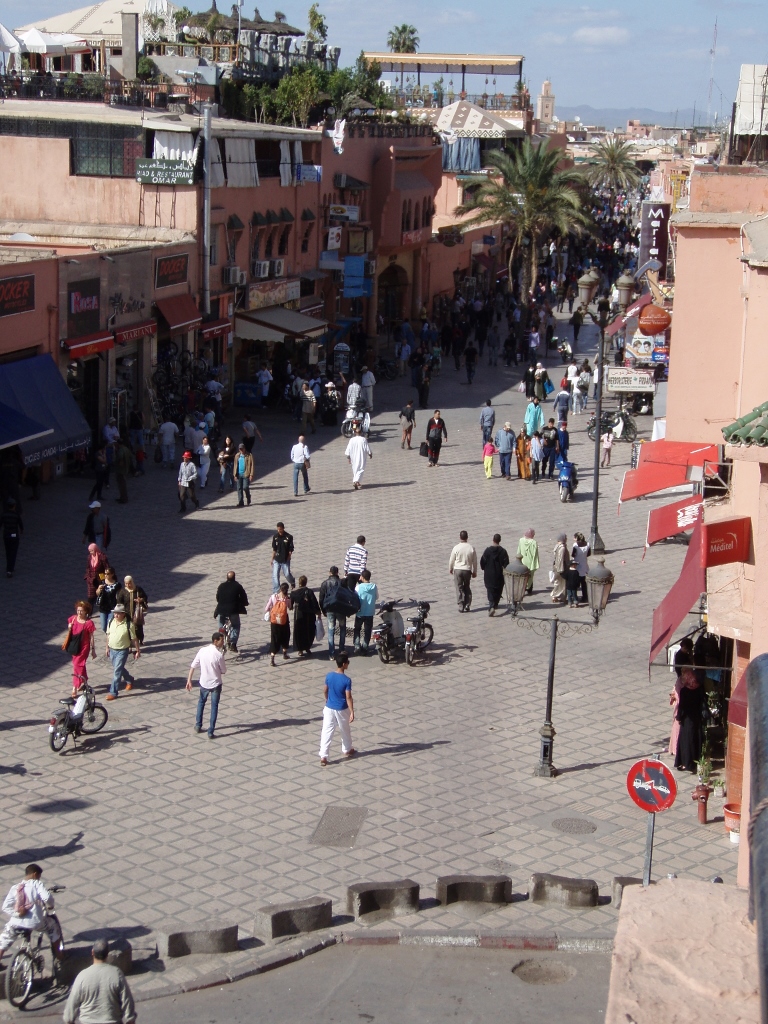 Marrakesh, a detail
Marrakesh, a detail
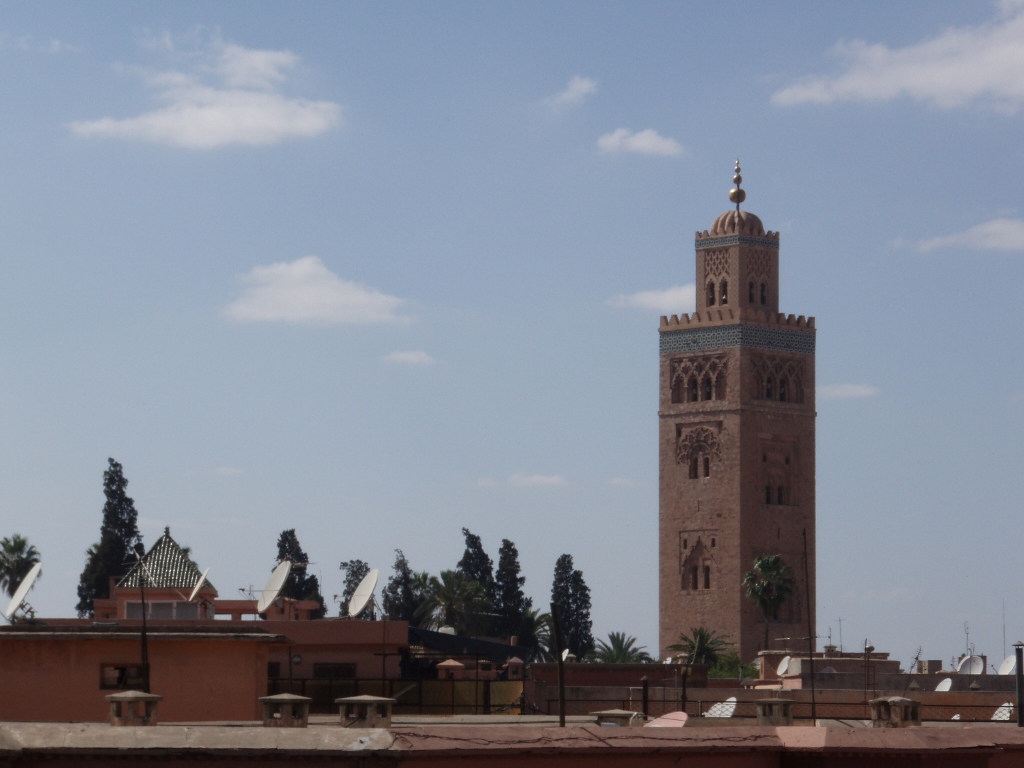 Marrakesh, a detail
Marrakesh, a detail
This time I ordered the typical “daily menu” intended for tourists. The idea was to try finally some typical or traditional Moroccan dishes. It was clear to me that this wasn’t an exceptional restaurant with top chefs, but I didn’t know much about Moroccan food anyway, so I wasn’t too concerned. In fact, there was some fun about this, but I sort of created it myself. More on that soon.
To start with, I was served a plate of the well-known Moroccan soup – Harira.
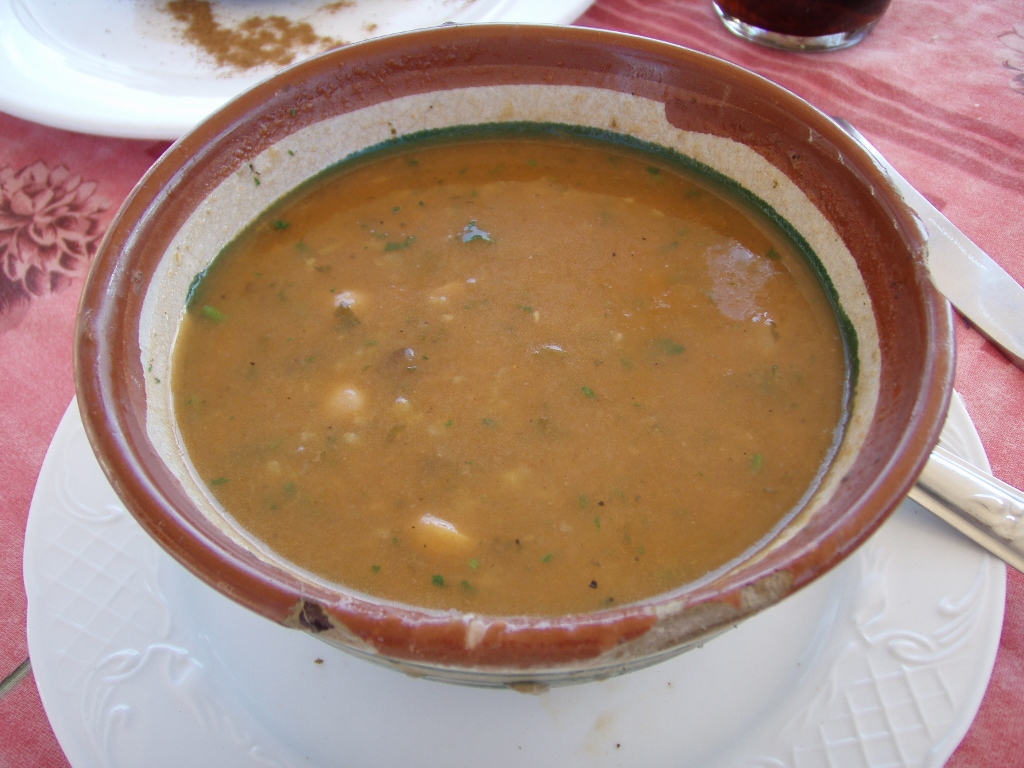 Harira soup in Marrakesh
Harira soup in Marrakesh
I’m not sure what a traditionally-minded Moroccan woman would think about it, but the soup was quite tasty, at least as far as I was concerned.
Later, I managed to make my own version at home. I still don’t know what a Moroccan woman would think about it, but my version of the soup is quite good to me. Although this soup can be made with beef, I made a vegetarian version. Here’s the recipe:
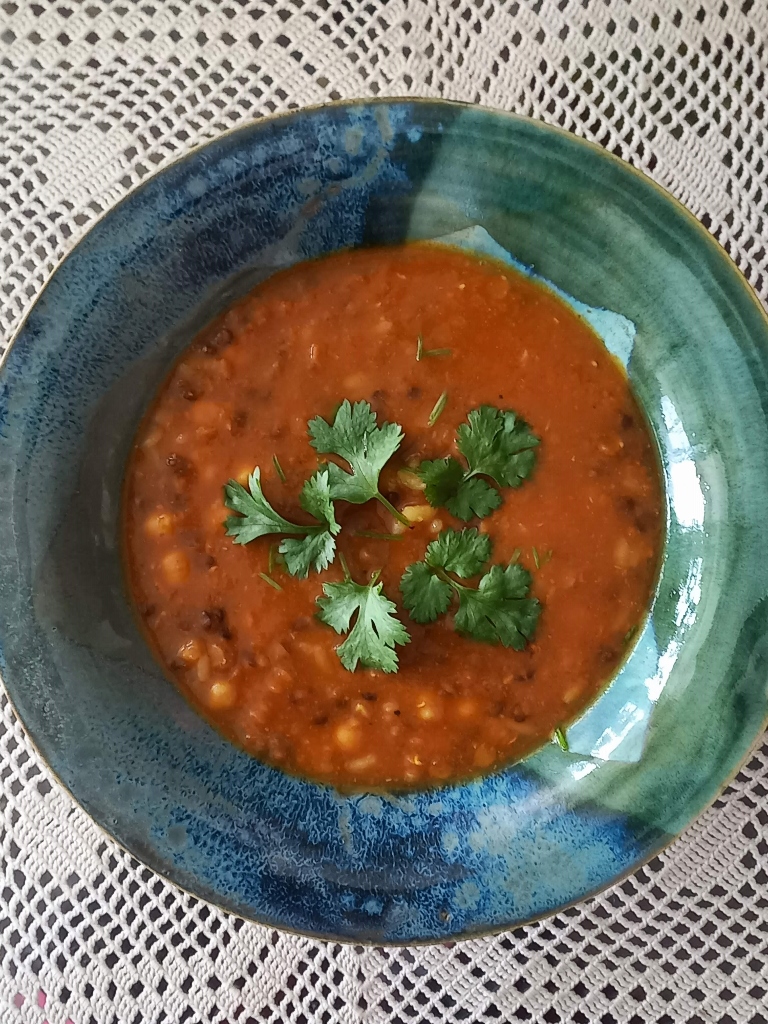 My version of Harira soup
My version of Harira soup
HARIRA SOUP
- 1 large onion
- 1 carrot
- 50 g celeriac
- 4 finely chopped cloves of garlic
- Spices: 1.5 teaspoons ground black pepper, 1.5 teaspoons ground turmeric, 1 teaspoon cumin, 0.5 teaspoon ground ginger, 0.5 teaspoon ground cinnamon, 0.5 teaspoon cayenne pepper, and 0.5 teaspoon ground coriander seeds, 1 teaspoon harissa paste
- 600 g fresh tomatoes
- 3 tablespoons tomato puree
- 1 cup brown lentils
- 1 cup orange lentils
- 300 g boiled chickpeas
- 1.5 l chicken broth or vegetable broth
- 50 g rice
Heat the oil over medium heat in a large pot, then add the chopped onion, carrot, and celeriac. Season with salt and sauté until they soften a bit.
Add the chopped garlic and all the spices, then sauté for a few more minutes, stirring to prevent burning.
Add the chopped tomatoes, tomato puree, both types of lentils, and chickpeas. Cook for about 5 more minutes.
Pour in the broth and increase the heat. Once it starts boiling, lower the temperature again. Let it cook for about half an hour. Add more salt if needed.
Then add the rice and cook for another 15 minutes or until the rice is fully cooked.
Serve with coriander leaves and lemon slices.
As for the rest of the lunch in Marrakesh, it was very traditional, but also fun.
Before I even set off on this trip, I had looked through one of my excellent cookbooks featuring recipes from around the world and that’s when I first learned about bastilla or pastilla (you can find both names for this Moroccan meat pie).
In that wonderful cookbook, the recipe used pigeon meat. I even came across information that the most traditional bastilla made with pigeon meat could be found in Fes, so while walking through the medina there, I asked around about where I could try it, but everyone just looked at me blankly. It seems bastilla with pigeon meat is no longer made and nowadays it’s typically prepared with chicken.
That’s all fine, but that recipe in my lovely cookbook, even though it includes a beautiful photo, didn’t emphasise one important detail that played a role during this lunch in Marrakesh.
Namely, after the harira soup, they immediately brought me two plates of food. One clearly contained tajine, that much I could tell, while in the other was some sort of bundle made of thin pastry sheets, topped with a pattern clearly made from powdered sugar and cinnamon.
I told the waiter that it was still too early for dessert and he patiently explained to me that it wasn’t dessert at all – that was, in fact, the bastilla.
I burst out laughing at my own ignorance, though I’m not ashamed to admit it.
In any case, since the bastilla was something like a warm appetiser, I started eating it very cautiously, especially because of the powdered sugar and cinnamon, considering it was a savoury meat pie!
It turned out to be one of the most delicious dishes I’ve ever tasted in my life!
That combination of savoury with sweet touches was absolutely extraordinary and from that moment on I started planning to make it myself at home. The process was made easier by the fact that I didn’t have to chase pigeons around Belgrade, though there are plenty and I’m not fond of them anyway, so I could simply make the dish with chicken.
I’ll share the recipe in one of the upcoming instalments of my travel stories from Morocco in 2010, but for now, here are the photos of the dishes that were part of my lunch in Marrakesh.
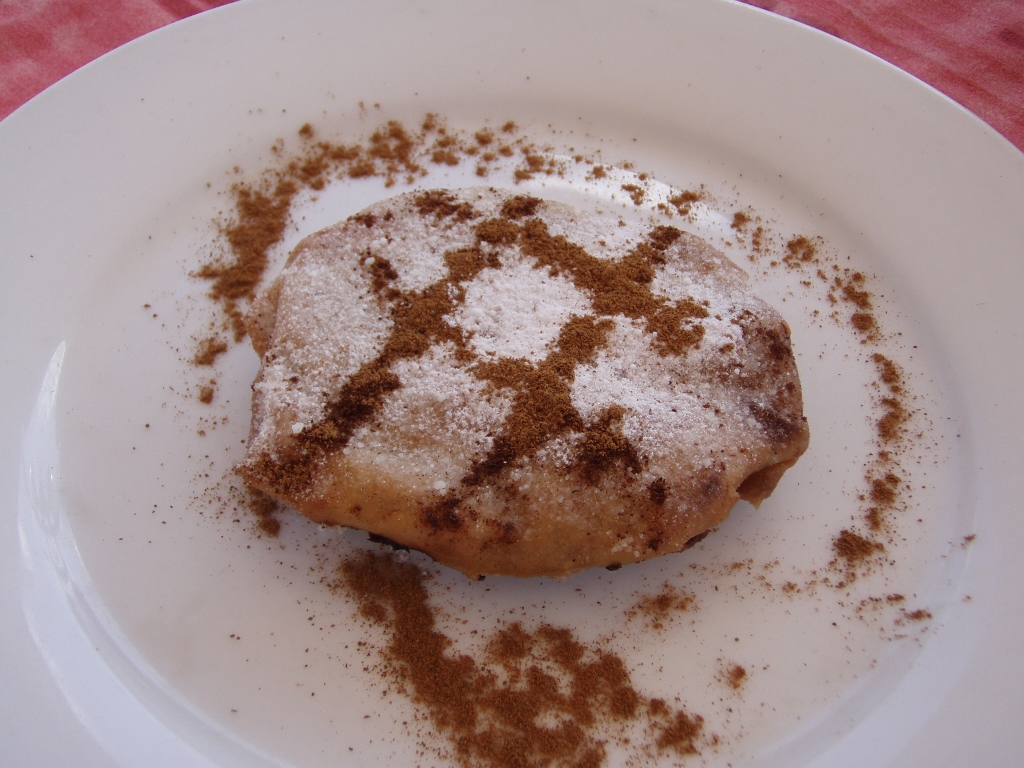 Bastilla in Marrakesh
Bastilla in Marrakesh
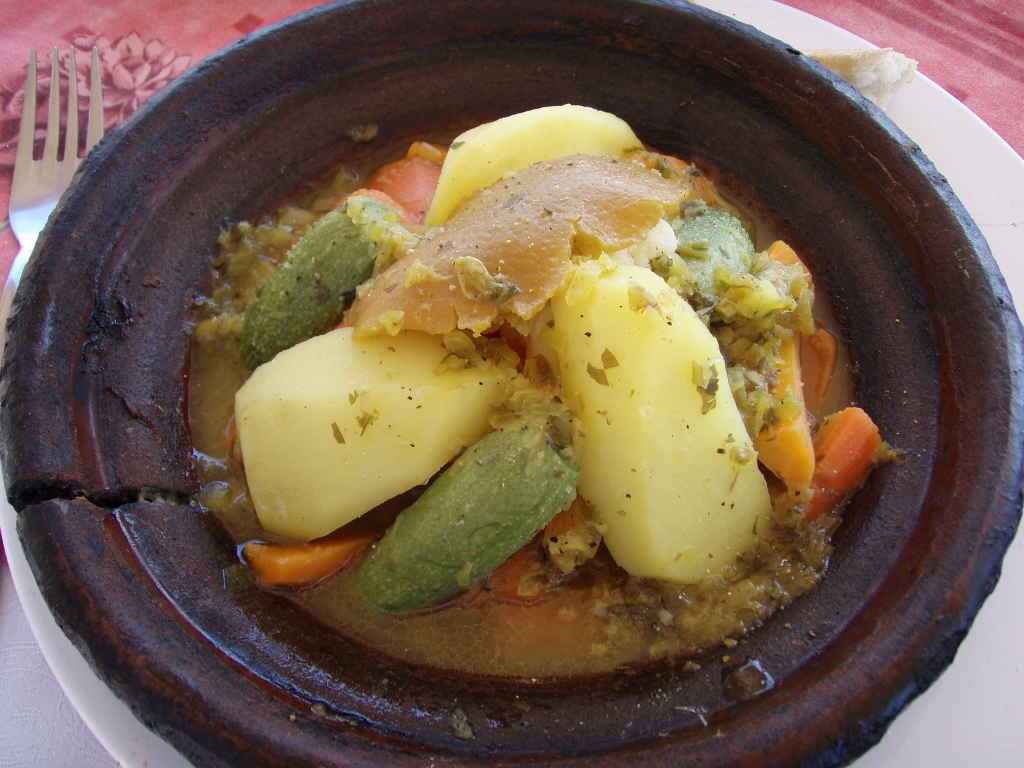 Tajine in Marrakesh
Tajine in Marrakesh